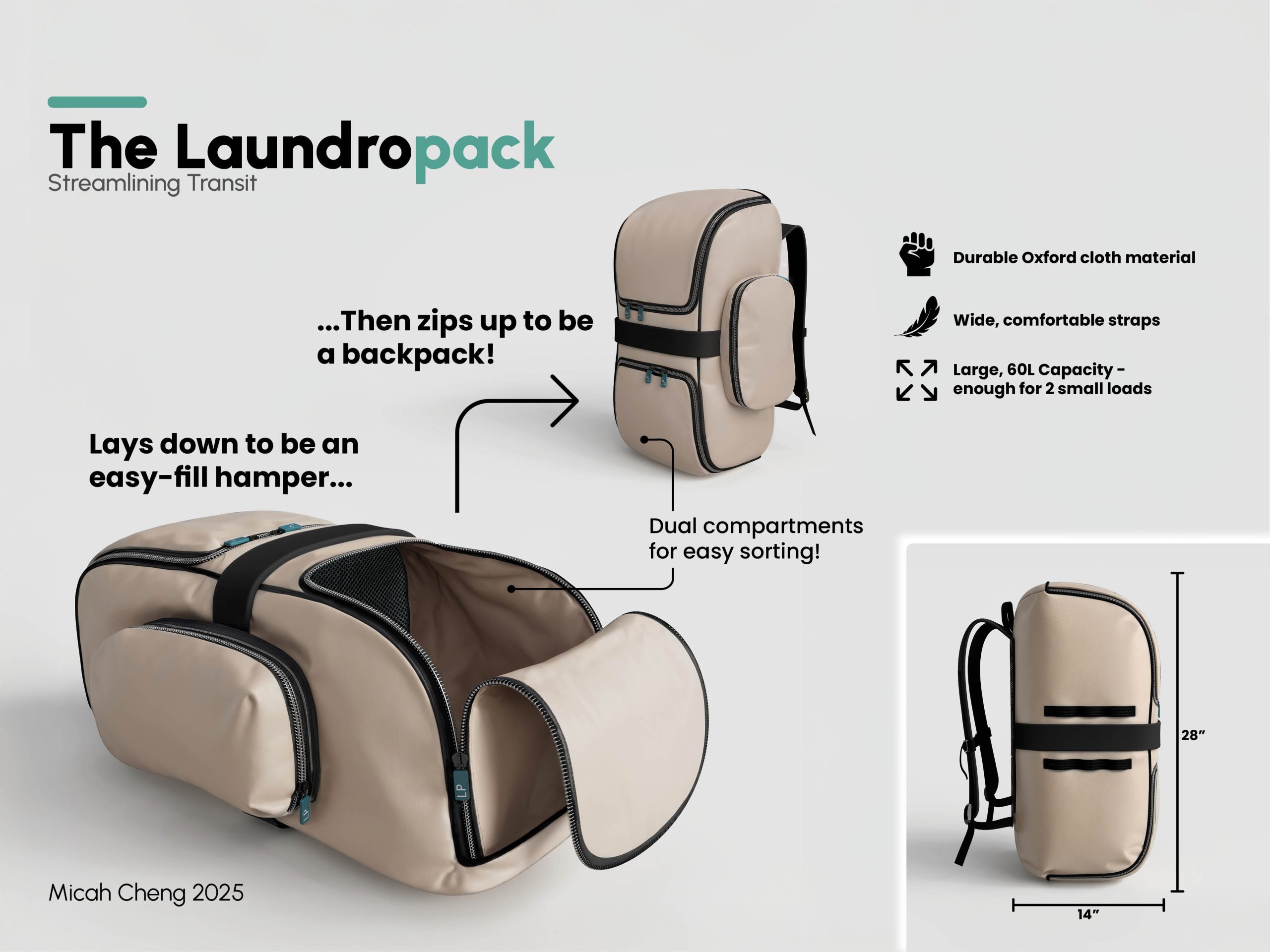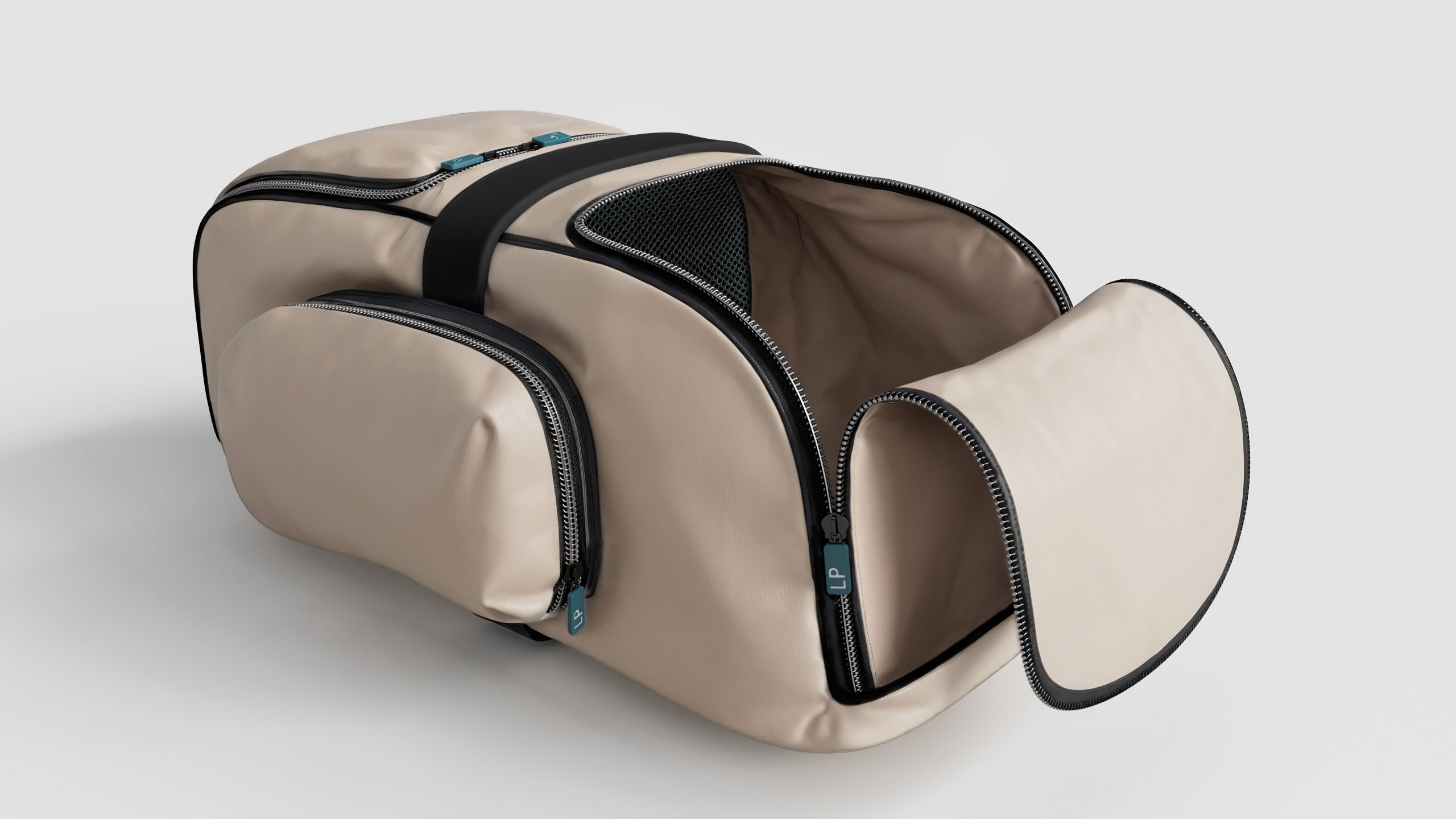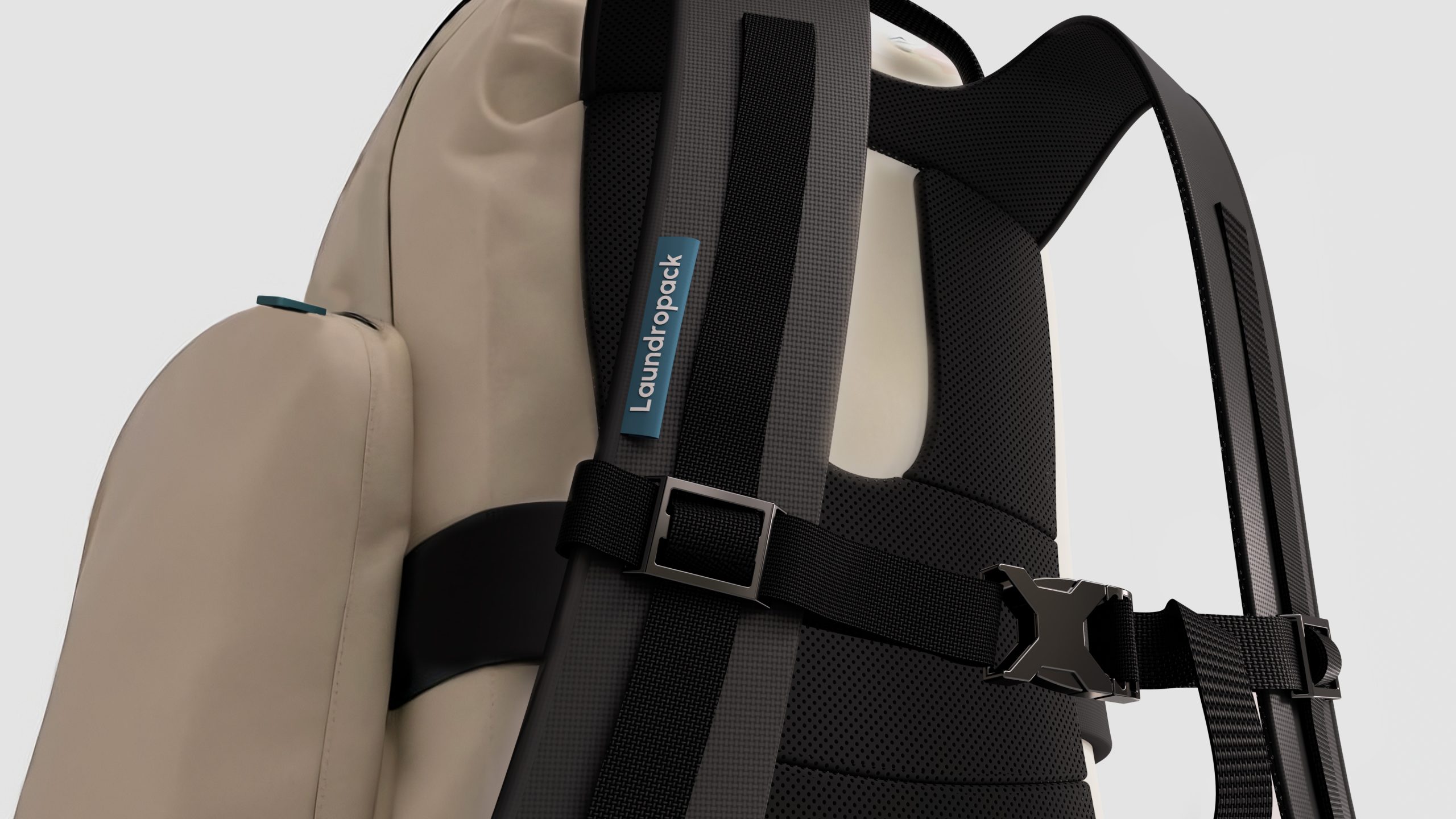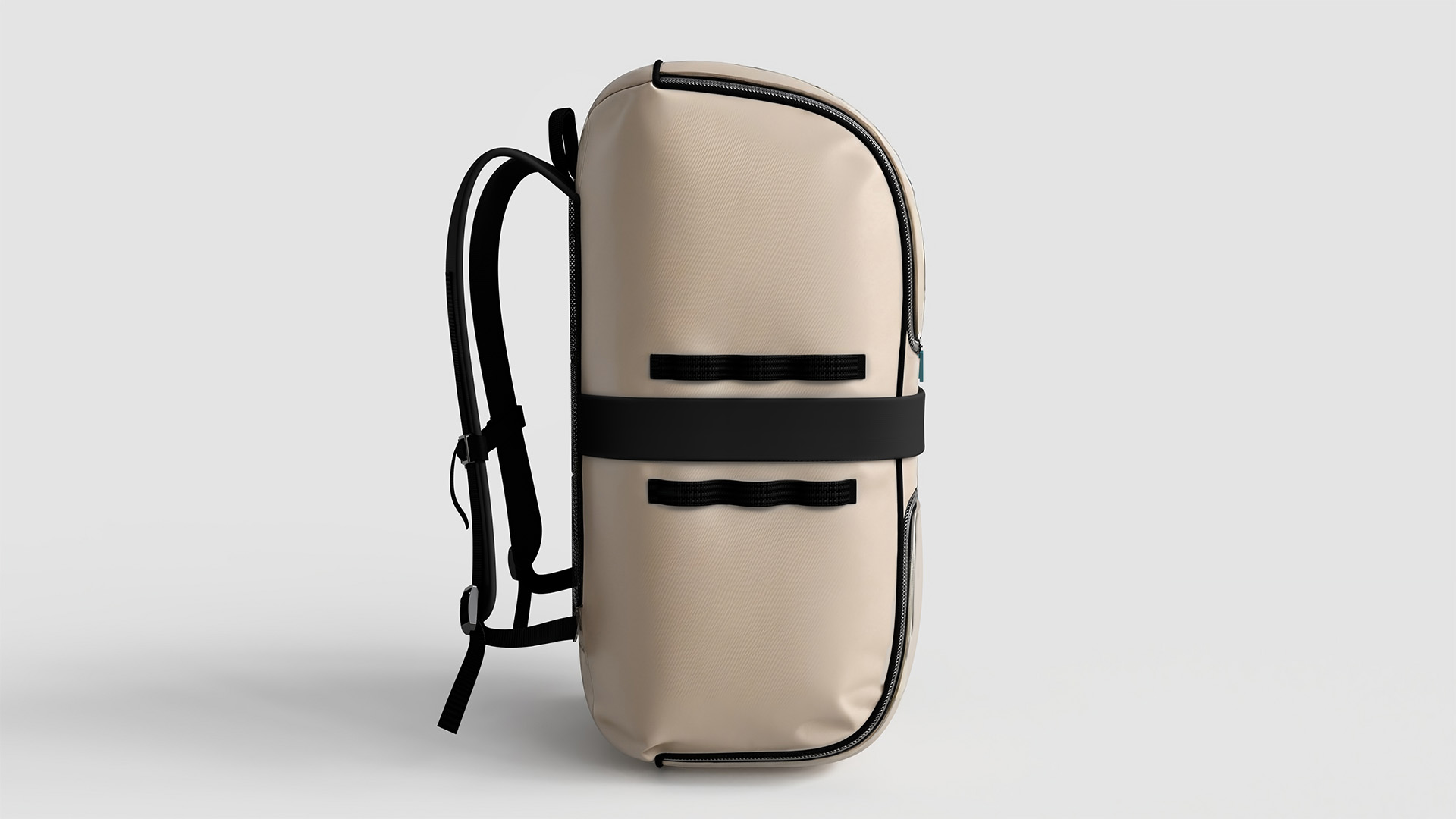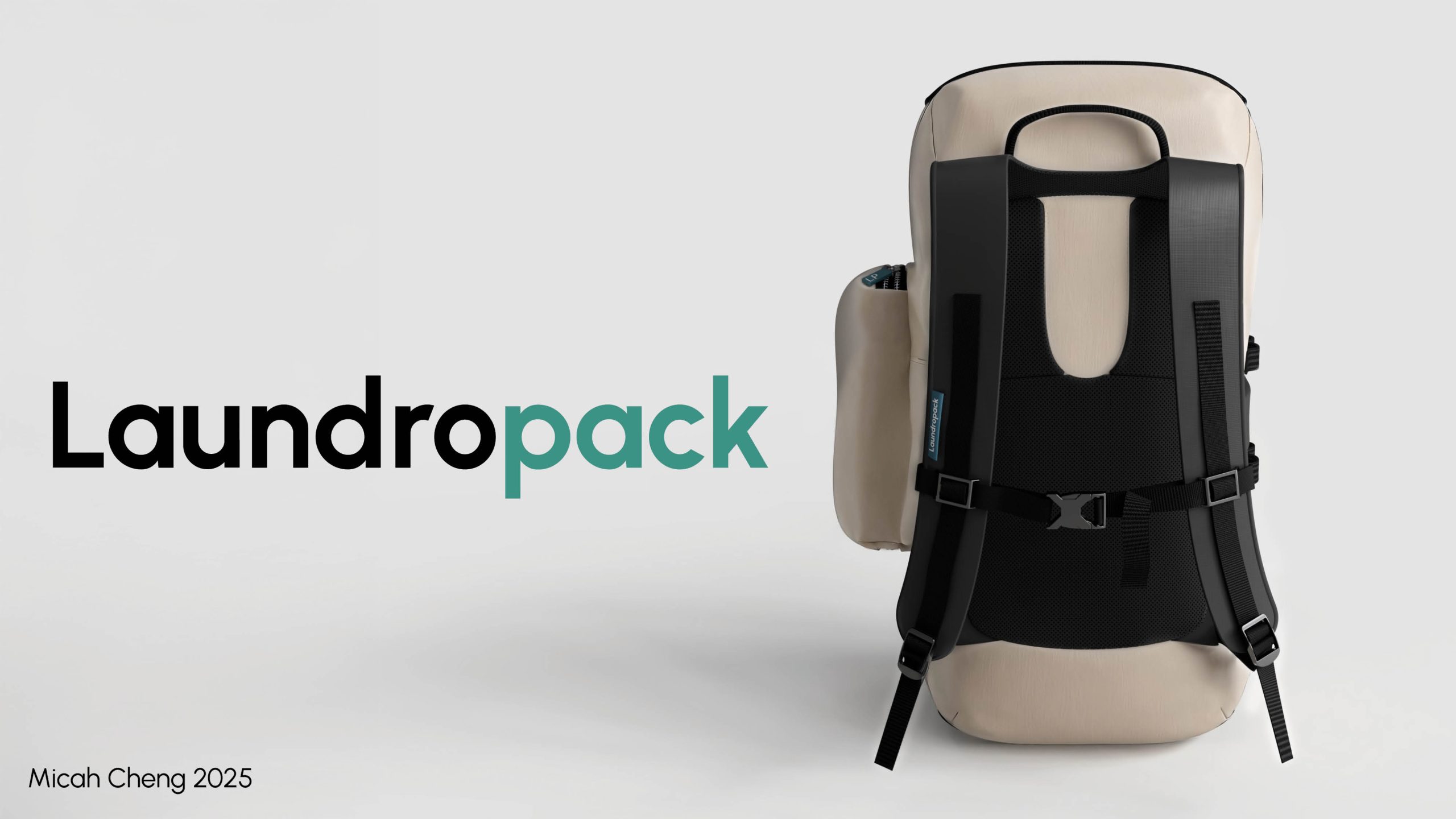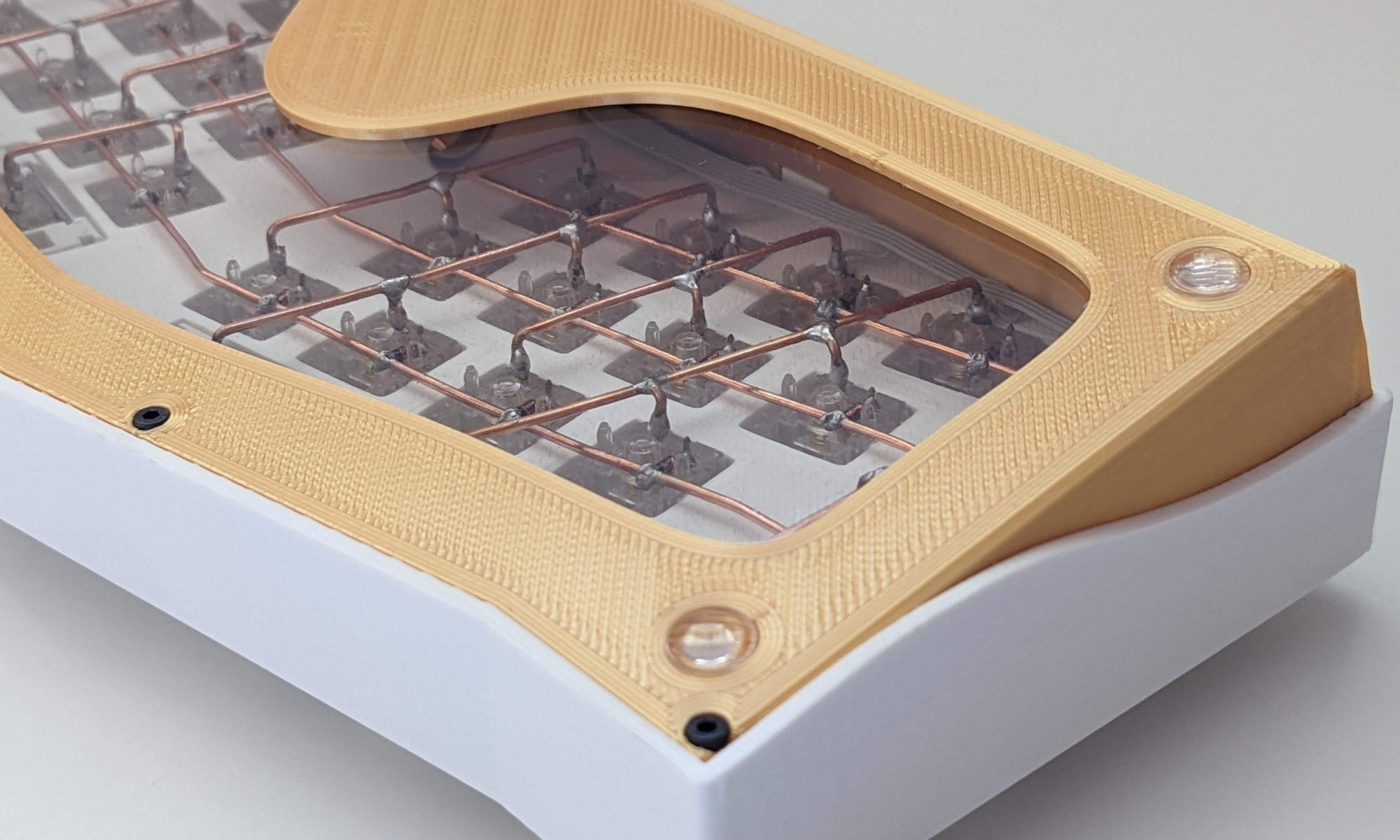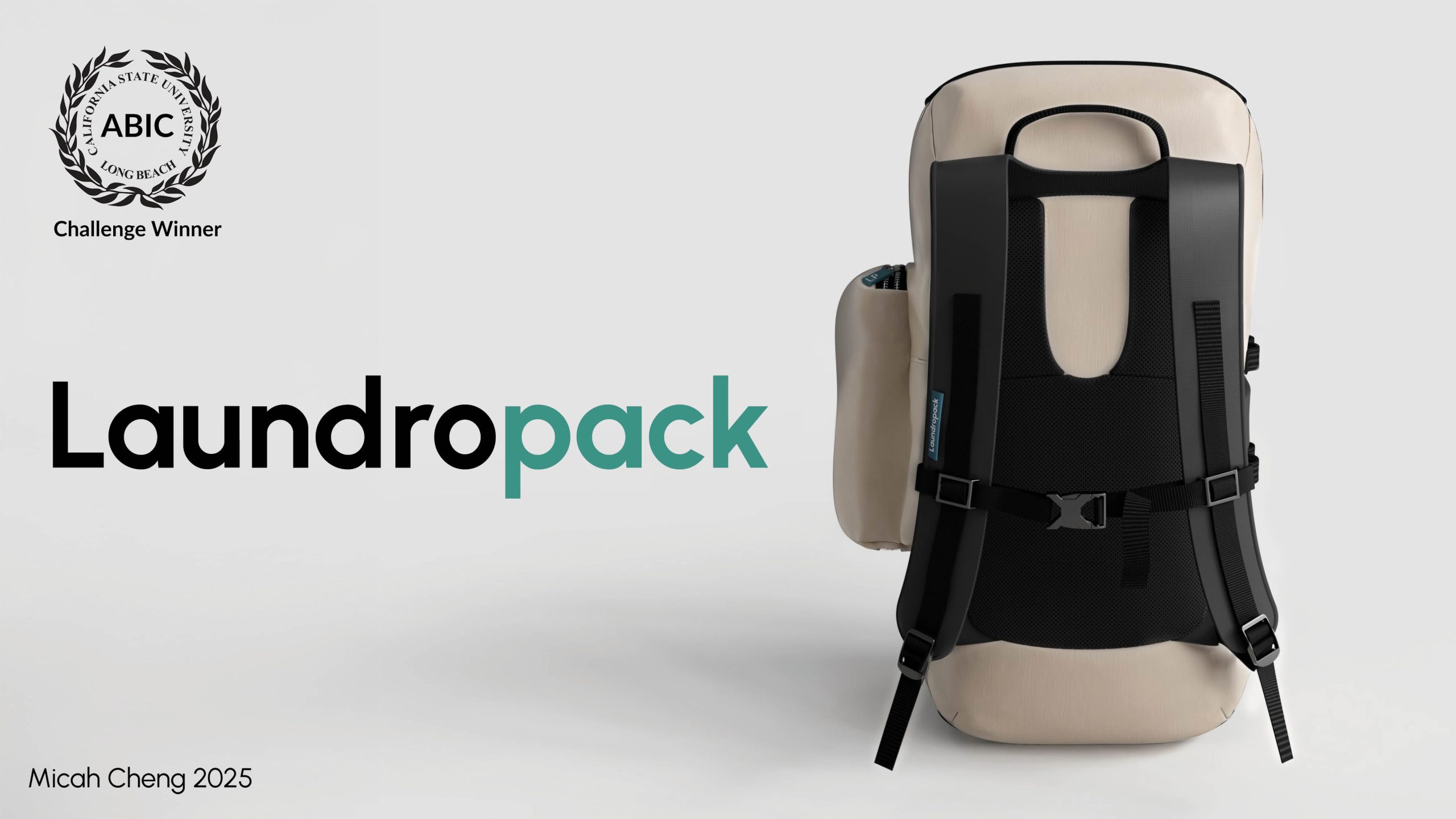
Introduction
When prompted to create a Home / Housewares product in one of my design classes, I decided to tackle the issue with how cumbersome it is to bring laundry to the laundromat.

Initial Research
Existing laundry carriers are problematic.
Hampers and baskets are difficult to carry especially when the user must travel down stairs or several blocks.
Backpacks are floppy and awkward to fill, contributing to frustration in loading.
Neither product features a convenient sorting solution, forcing the user to spend extra, unnecessary time in sorting their clothes.
Target Market + Interview Findings
Being that this is a product designed to remedy the problems found in existing laundry carriers, this product will naturally be marketed towards people who do not have access to their own personal laundry machines, who need to take their laundry to a laundromat. These are often lower income people or of a younger demographic, living in anywhere from apartments, to dorms, or any other shared living situations.
I conducted numerous interviews, primarily with college students, but also with people living in apartments without laundry machines. From these interviews, I found some common trends for key attractors and pain points found in existing products:
Attractors:
- Easy to carry
- Has a method to sort lights & darks
- High quality material
- Breathable: ability to air out and minimize foul odors
- Appropriate size: carries the desired amount of laundry easily; not too big, not too small
Pain Points:
- Hampers and Baskets are cumbersome. Even popular baskets claiming to be easy to carry are still not great.
- Difficult to load into a trunk of a car or onto a bus
- Lack of sorting ability in most products adds an extra few minutes of time before doing laundry
- Lack of a convenient solution to carry detergents or other essentials
Existing Market Reseach
With all this information I found, the next step was to do a more in-depth study of the existing products on the market.
Hampers:
Pros:
- Large opening makes it easy to simply toss your dirty clothes in
- High capacity
Cons:
- Cumbersome to carry
- Most lack a solution to separate lights and darks

Baskets:
Pros:
- Large opening makes it easy to simply toss your dirty clothes in
- Using 2 baskets makes easy sorting
Cons:
- Lower capacity than the hamper
- Easier to carry than the hamper, but still relatively cumbersome
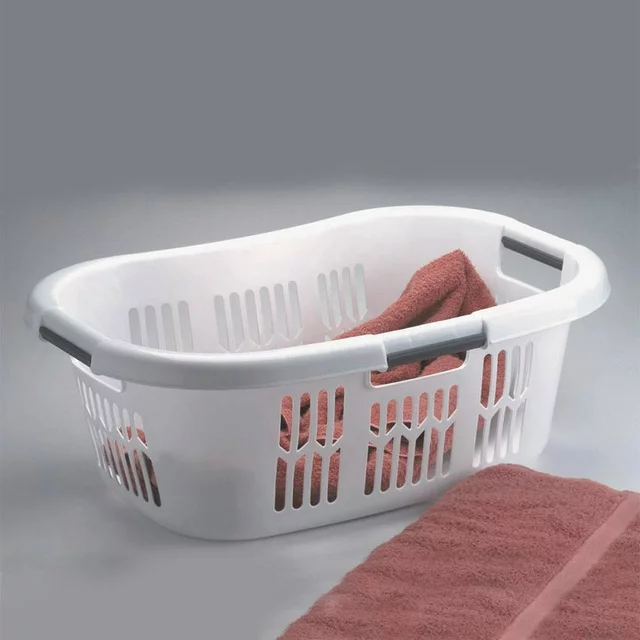
Backpacks:
Pros:
- Convenient solution to transport laundry
- Includes pockets for detergent and supplies
Cons:
- Floppy bag is a pain to fill
- No solution for sorting lights and darks
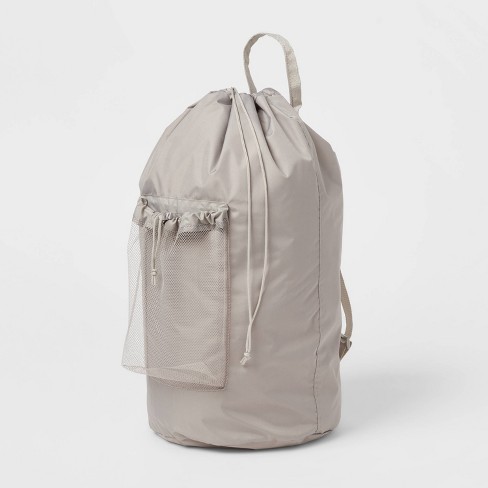
I dove further by creating a Price-Convenience map to visualize where current products lie. I found there to be an opportunity in the mid-upper price range of products, as there is an overwhelming number of cheap product offerings.
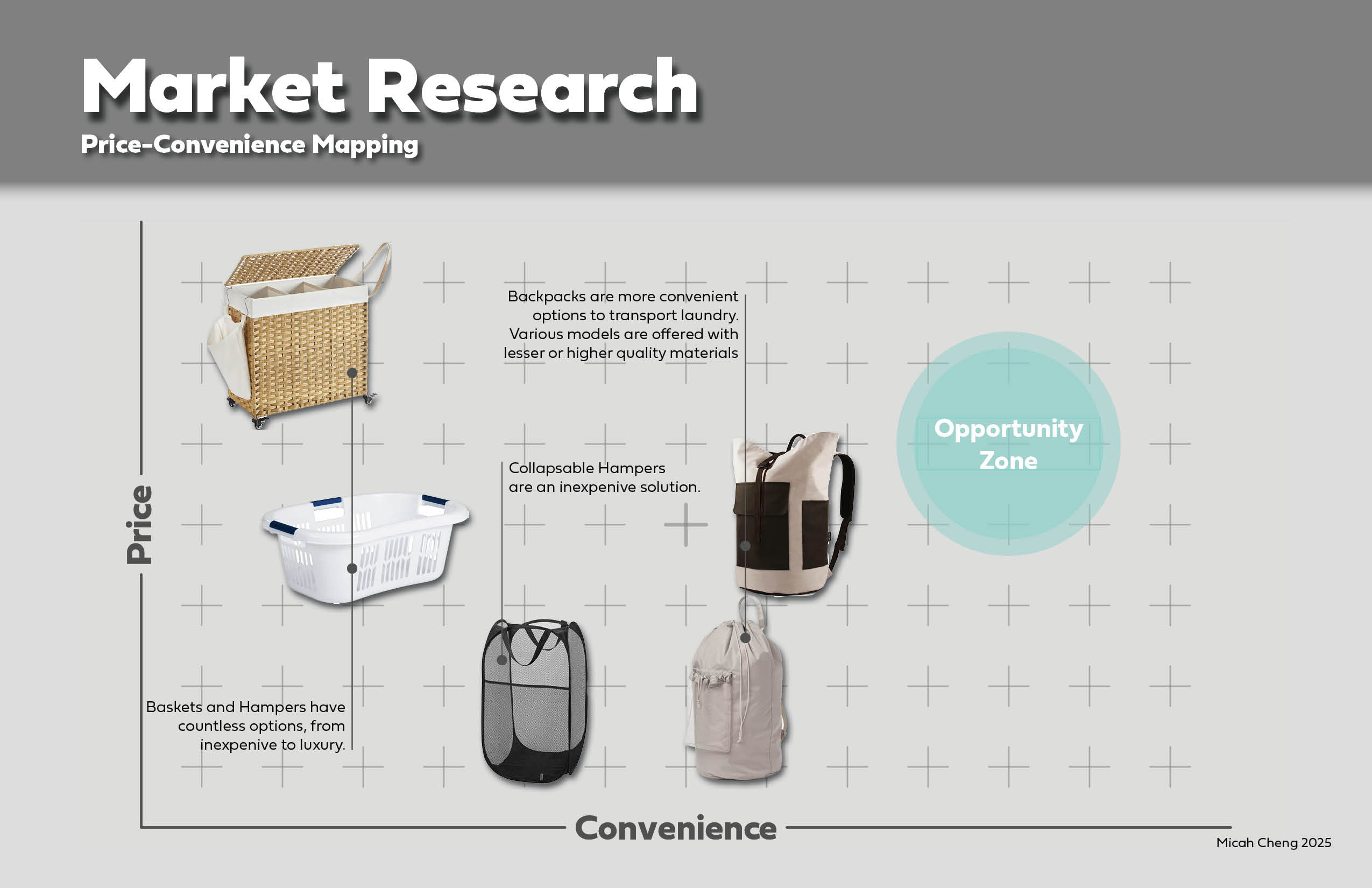
Key Takeaways
- The laundry carrier market includes solutions anywhere from cheap to premium, but is currently flooded with cheaper-end products.
- Current high-end laundry carriers are inconvenient to bring to the laundromat, due to being full-featured, heavy hampers designed for people with personal laundry machines.
- Backpacks are currently the most convenient option for carrying laundry, yet there are no premium models available.
- The laundry carrier market is lacking in high-convenience, premium solutions.
Existing User Scenario
With all my market research done, I now wanted to move forward to studying the actual scenario one must go through to get their laundry done. Through going through the whole process, while documenting each step, it helped to really visualize and experience the problems with these existing products.
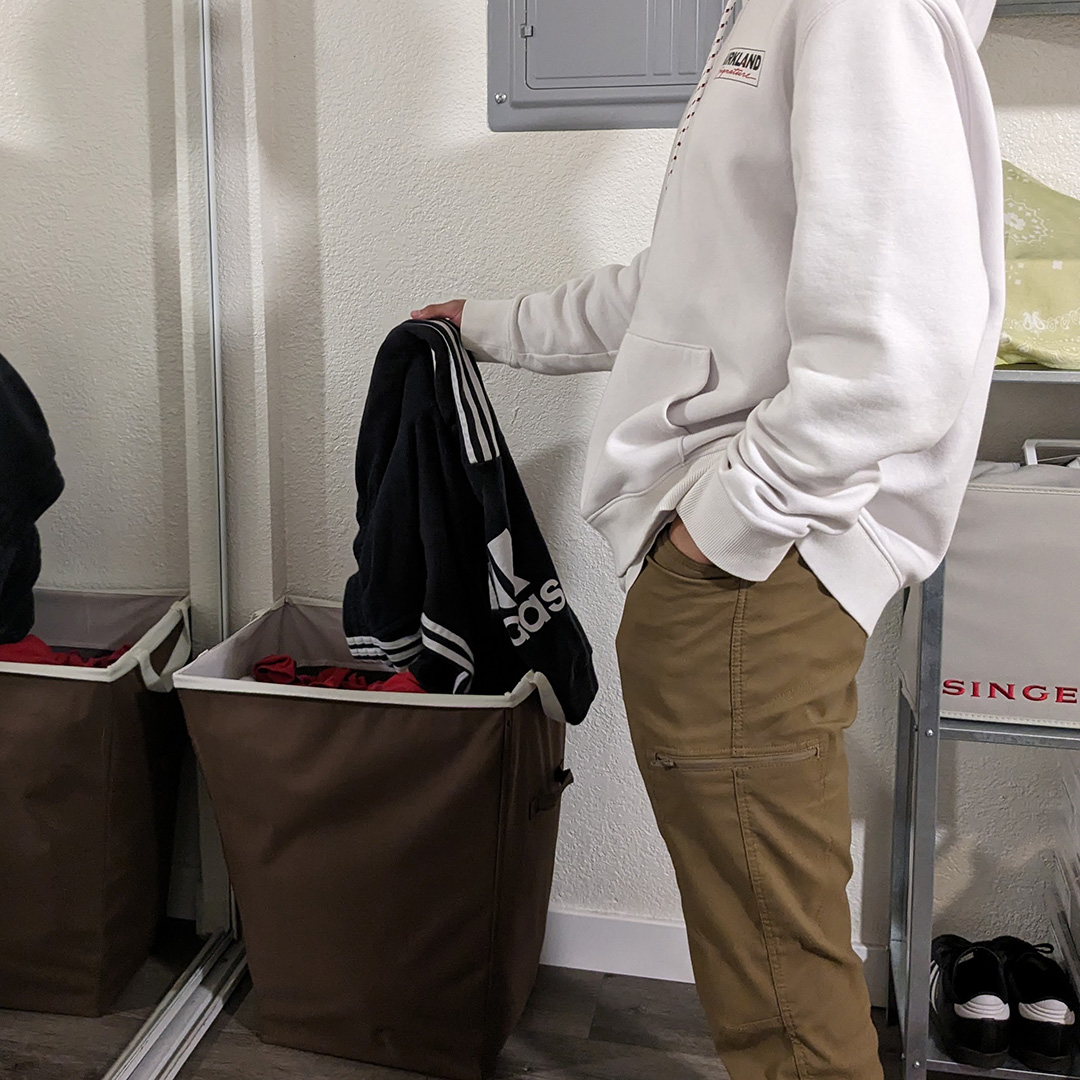
Accumulation
The scenario begins when the user begins accumulating dirty laundry. In this scenario, the user is using a hamper, because it is easy to simply toss clothes into after a long, tiring day.
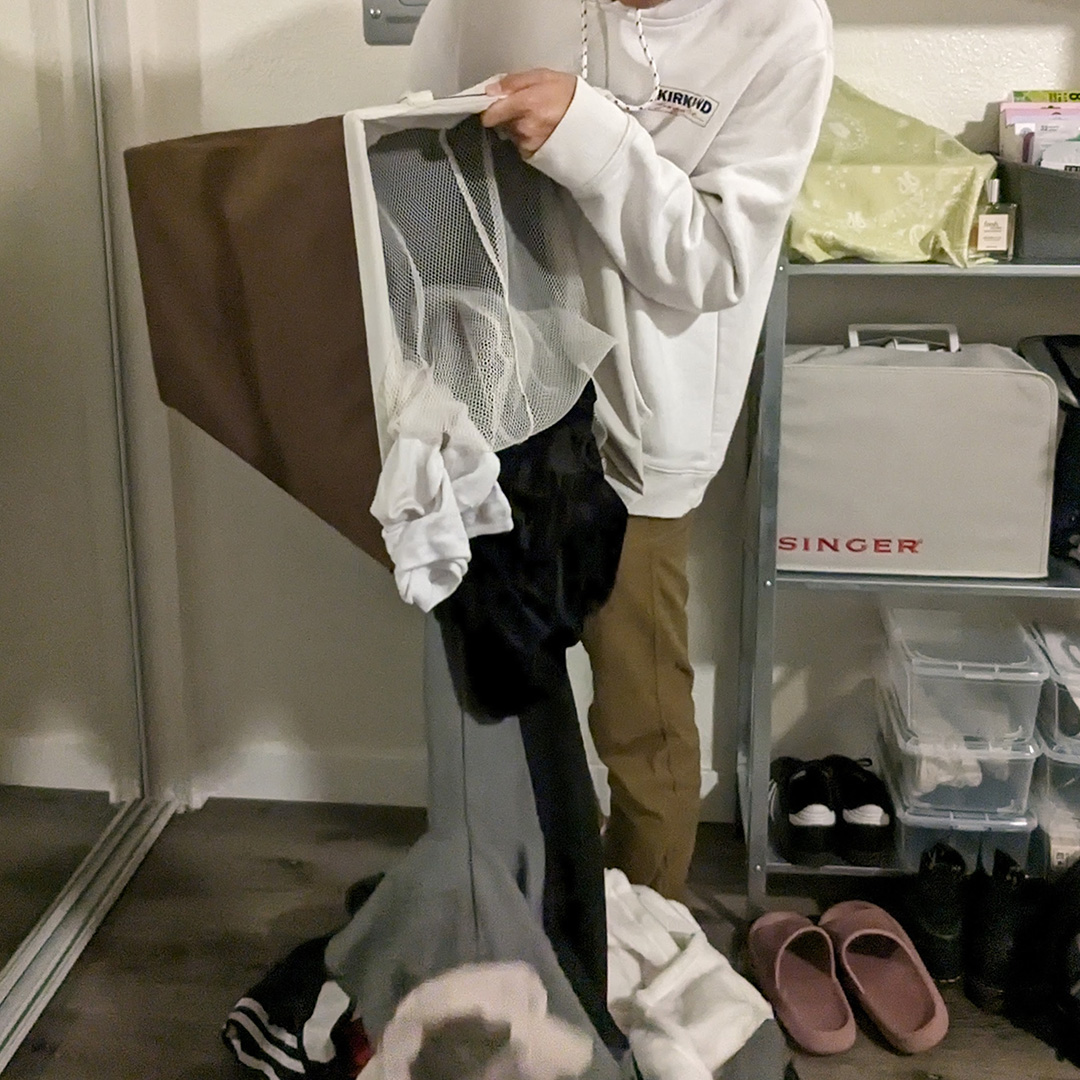
Dumping it Out
Eventually, the hamper will be filled up. Because the hamper is so awkward to carry, the user must dump all their clothes out, to transfer them into the backpack.
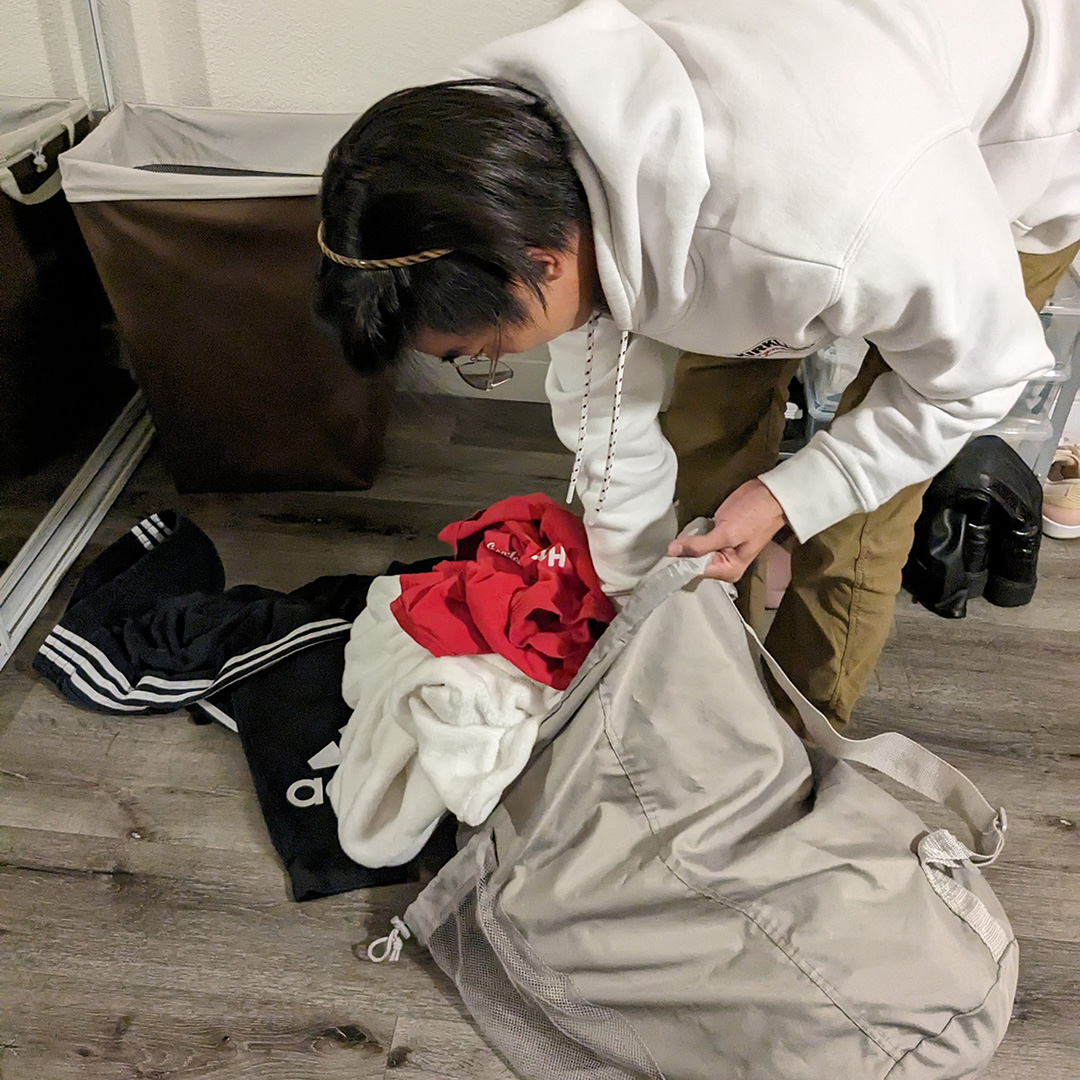
Loading into Backpack
Now the user proceeds to fill the floppy backpack with their laundry, in preparation to go to the laundromat. Because the bag has no structure, it takes significantly longer to load.
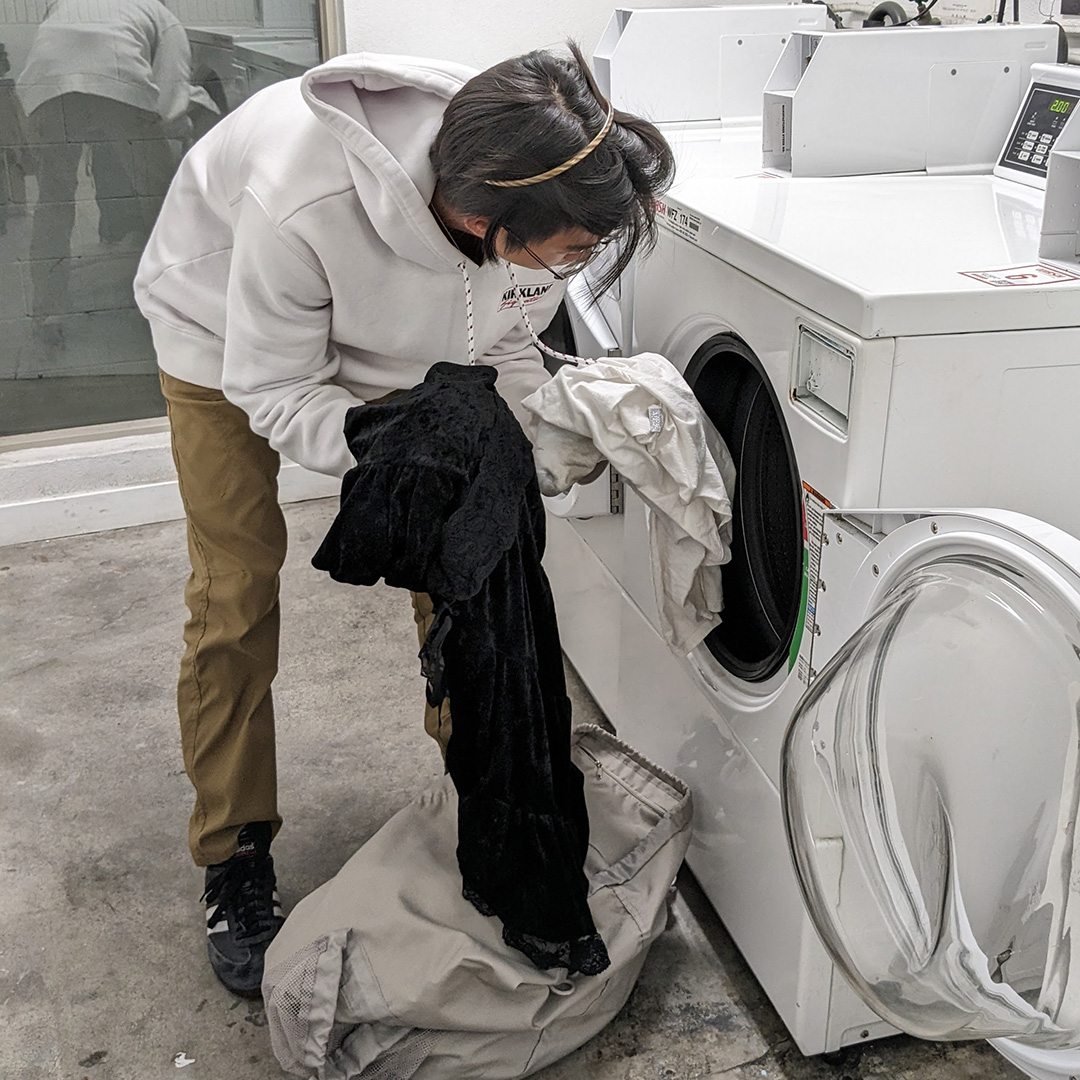
Loading the Washer
After arriving at the laundromat, the first step is to transfer the clothes to the washing machine. Because both lights and darks are in the same pocket of the backpack, the user must carefully take out each article of clothing to sort them.

Packing Up
Once the clothes are clean, dried and folded, the user can then load them into the backpack to bring home. However, due to the backpack’s lack of structure, the freshly folded clothes will inevitably get a little wrinkled during transit.
Scenario Notes
- While not everyone follows this exact same story, I found from my interview research that similar inconveniences apply, no matter what laundry carriers are used.
- Hampers & Baskets are awkward to carry.
- Backpacks are floppy, making them a pain to fill over time.
- In this scenario, the user utilizes both the hamper and the backpack, in attempt to remedy the pain points found individually in each. However, this in itself is another inconvenience, as the user must waste time and effort in transferring the clothes between the carriers.
Research Conclusion
Given the existing products on the market, no matter how they are used, it is unavoidable having significant inconveniences.
Key Attractors
With all this research done, I concluded that the three most essential factors I need to focus on with my upcoming design is:



Ease of Transit
Intrinsic Sorting
Quality Material
Because the user will be frequently transporting their laundry places, the final solution must be easy to carry.
In order to save undue work at or before washing clothes, the solution must include a method of sorting laundry.
Because this product will be targeting users looking for a more premium solution, the quality and construction must be durable.
Design
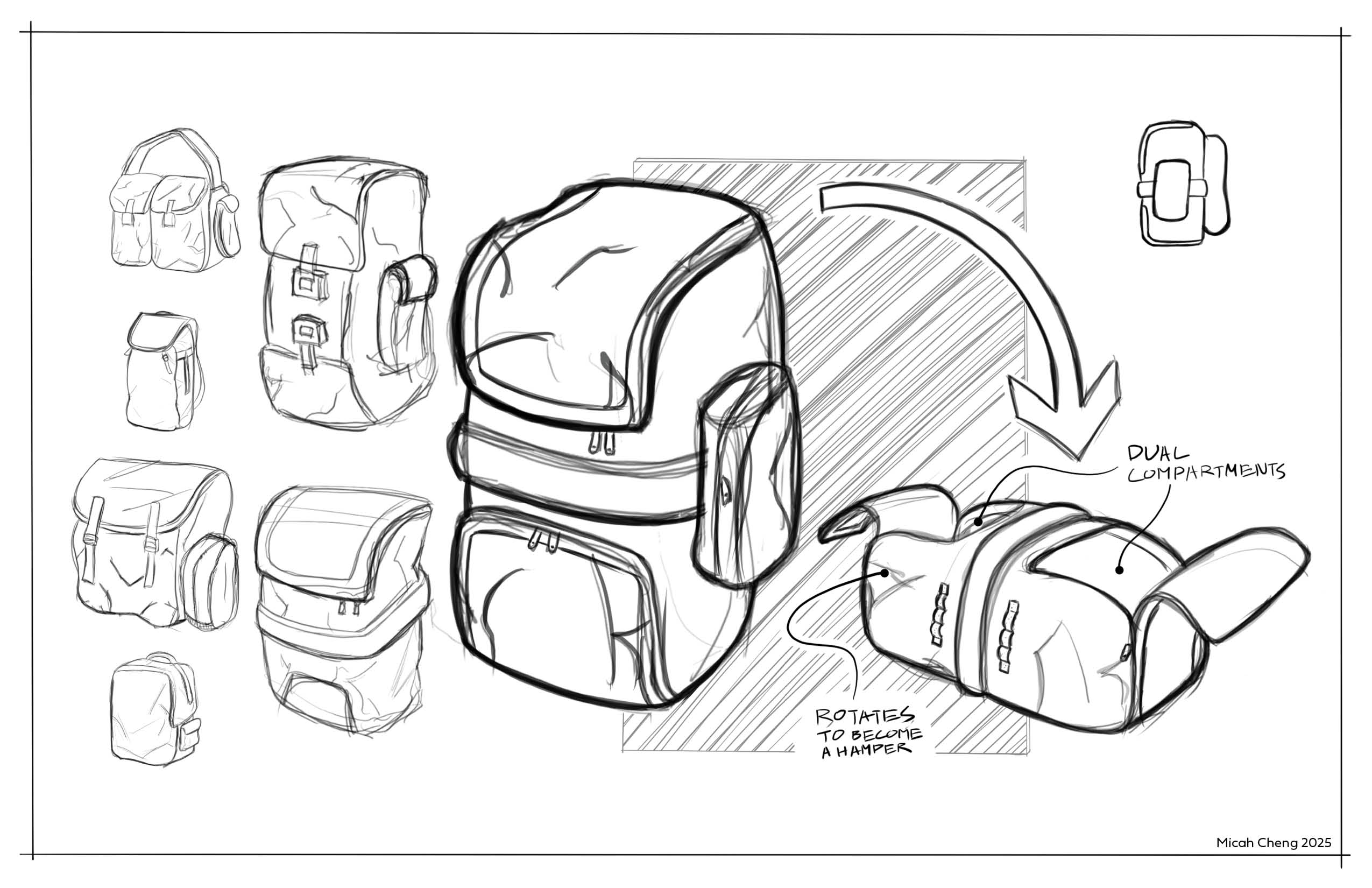
During the ideation process, I explored different forms of bags. From the beginning, I knew that the end product would have to be a backpack or similar soft good, to give it the advantage over hampers and baskets during transit. The biggest challenge I faced, though, was basing my work around the constraint of including a system to sort the clothes. This requirement led me to explore several different styles of dual compartment, yet symmetric designs.
The design I ended up moving forward with features a backpack with horizontal symmetry, which conveniently allows the user to lay down the bag, turning it into an open-top hamper when not being carried.
Proof of Concept

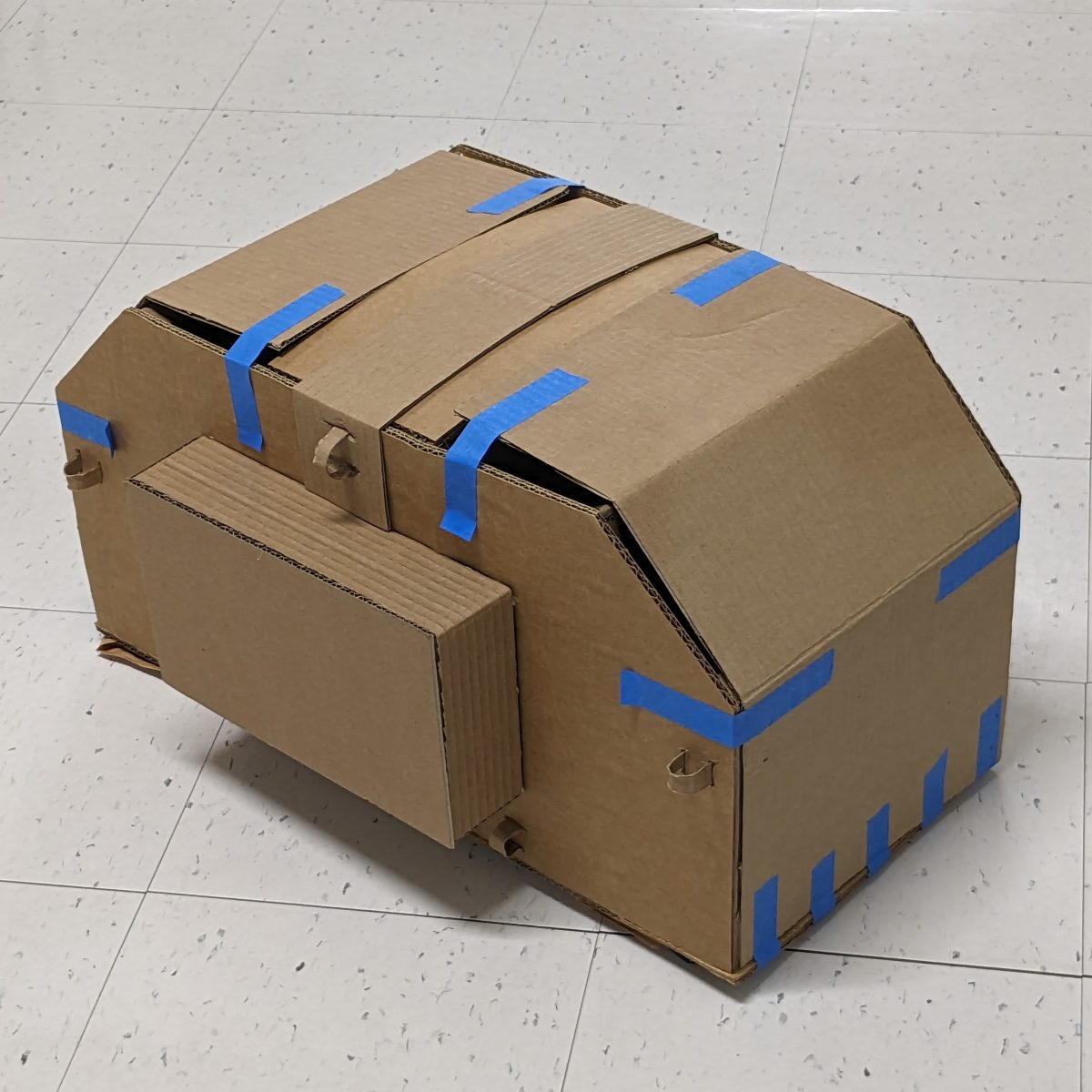
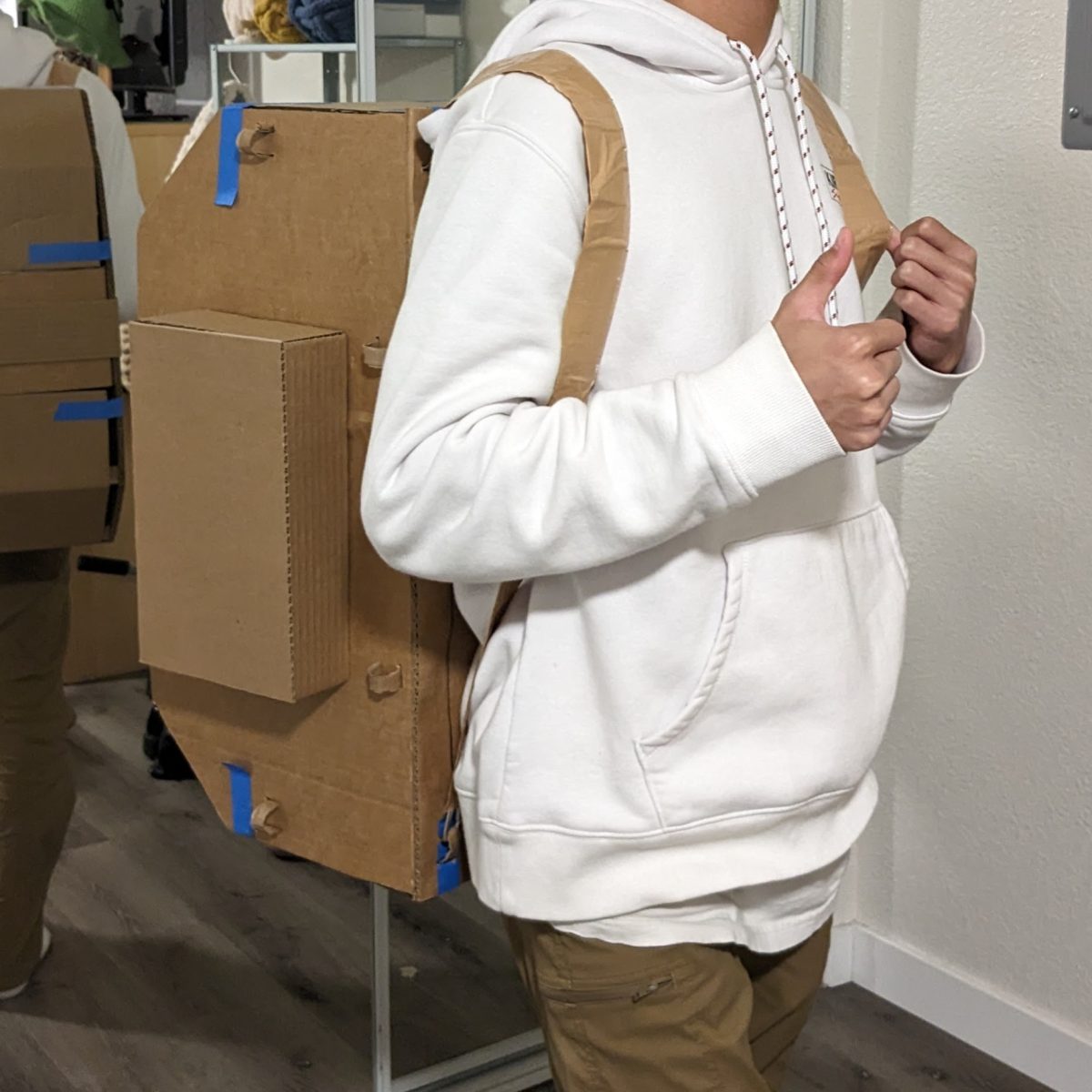
Next, I created a full-scale cardboard mock up of my design, in order to test the dimensions and functionality of the design.
Updated User Scenario
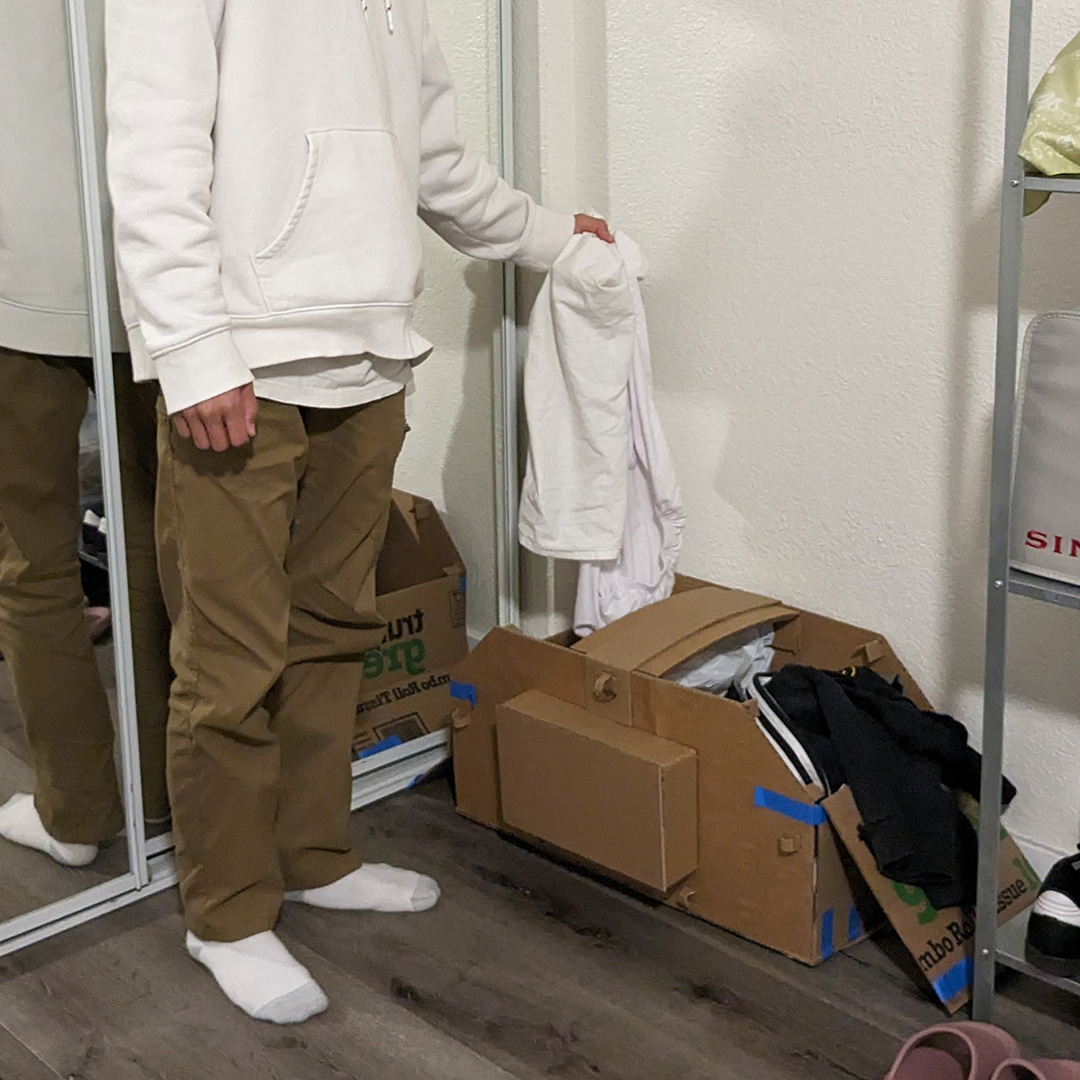
Accumulation
The scenario begins when the user begins accumulating dirty laundry. In this scenario, the user is using the Laundropack. Because there are 2 convenient compartments, the user can easily toss lights in one side and darks in the other.

Zipping it Up
Eventually, the Laundropack will be filled up. In order to prepare to go to the laundromat, all the user needs to do is zip up the 2 flaps.
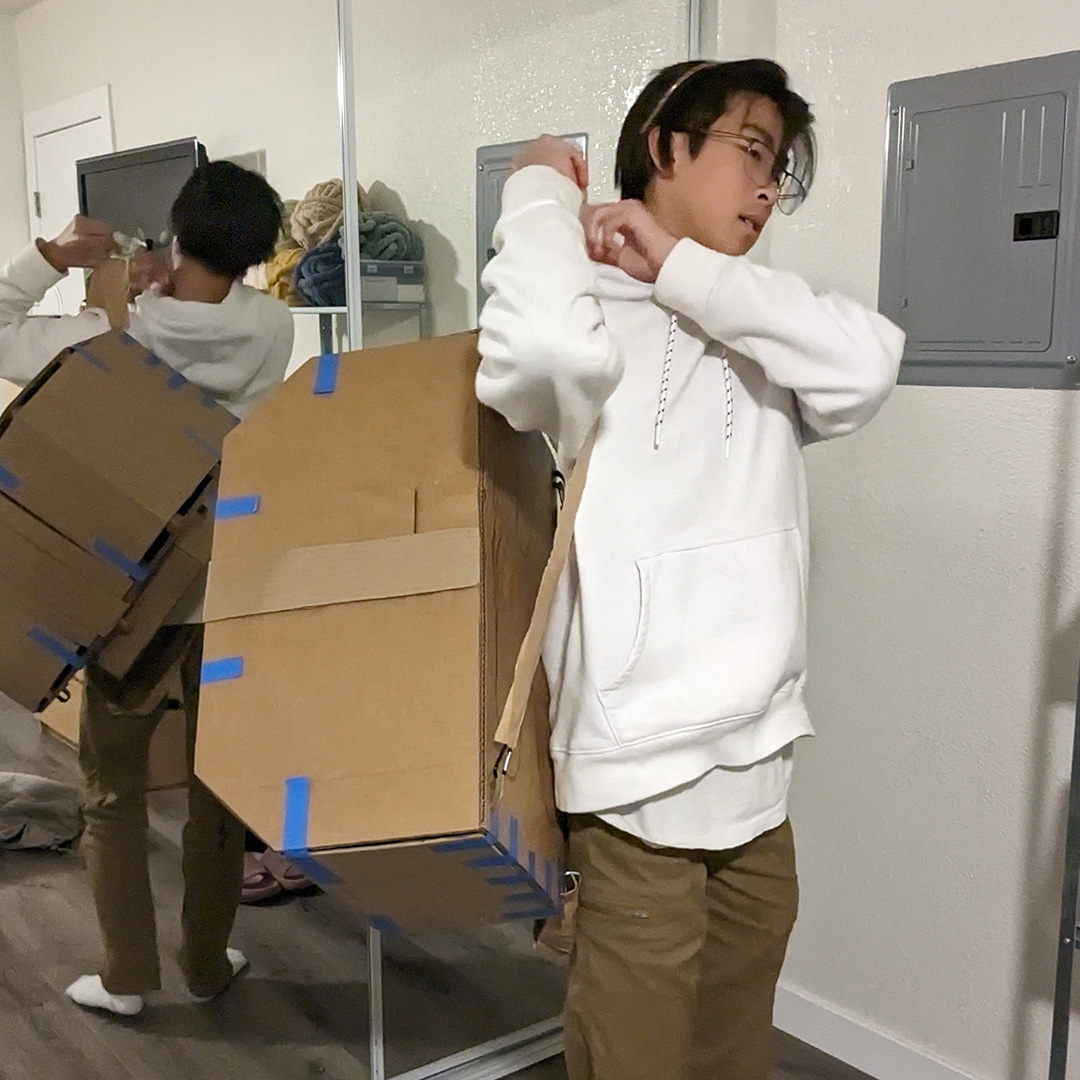
Putting it On
Once zipped up, the user then rotates the Laundropack to backpack mode. This makes it extremely easy to carry when compared to the existing solutions.
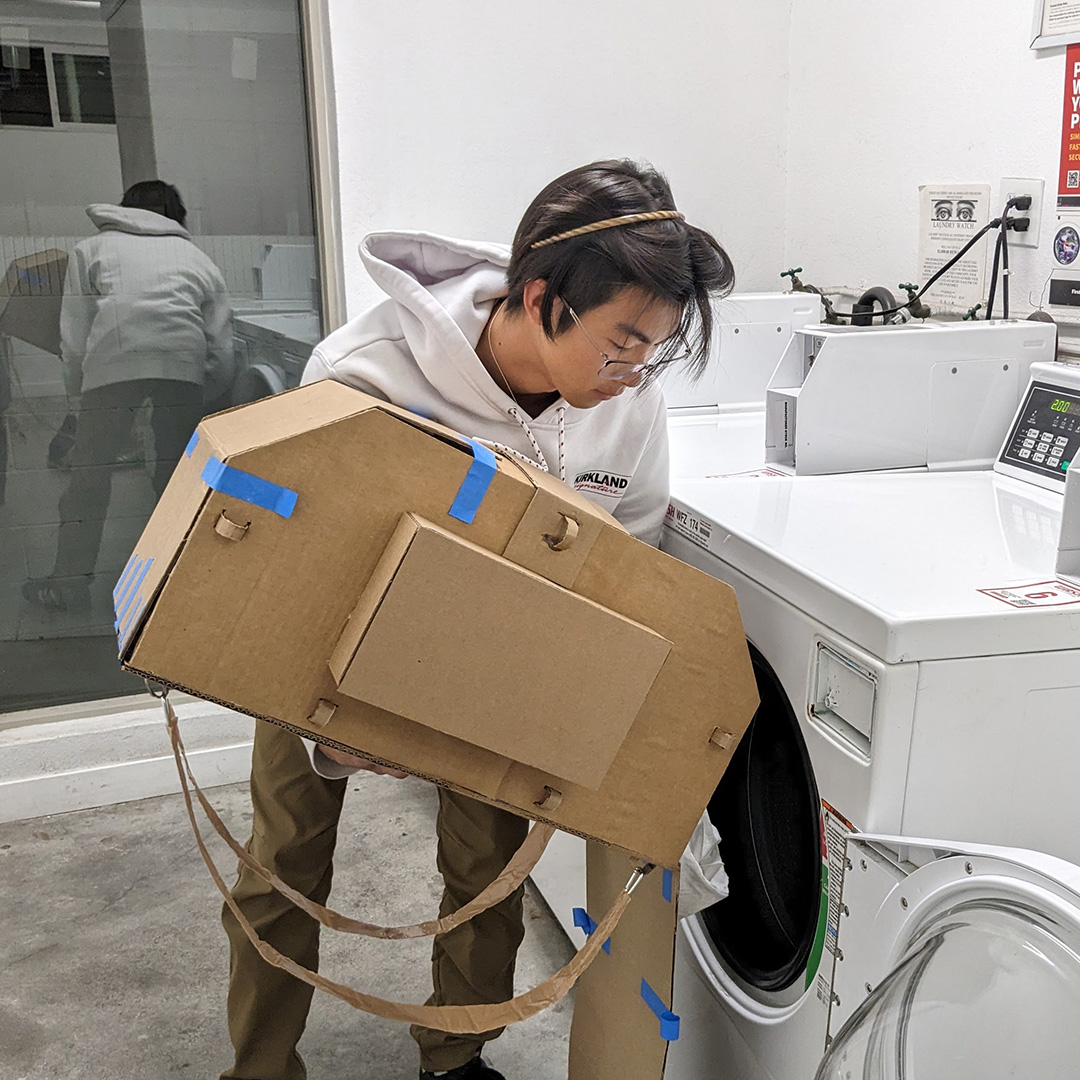
Loading the Washer
After arriving at the laundromat, the first step is to transfer the clothes to the washing machine. Because the lights and darks are in separate compartments, the user can quickly open one end and empty its contents into the machine, knowing that they are all of the correct color.
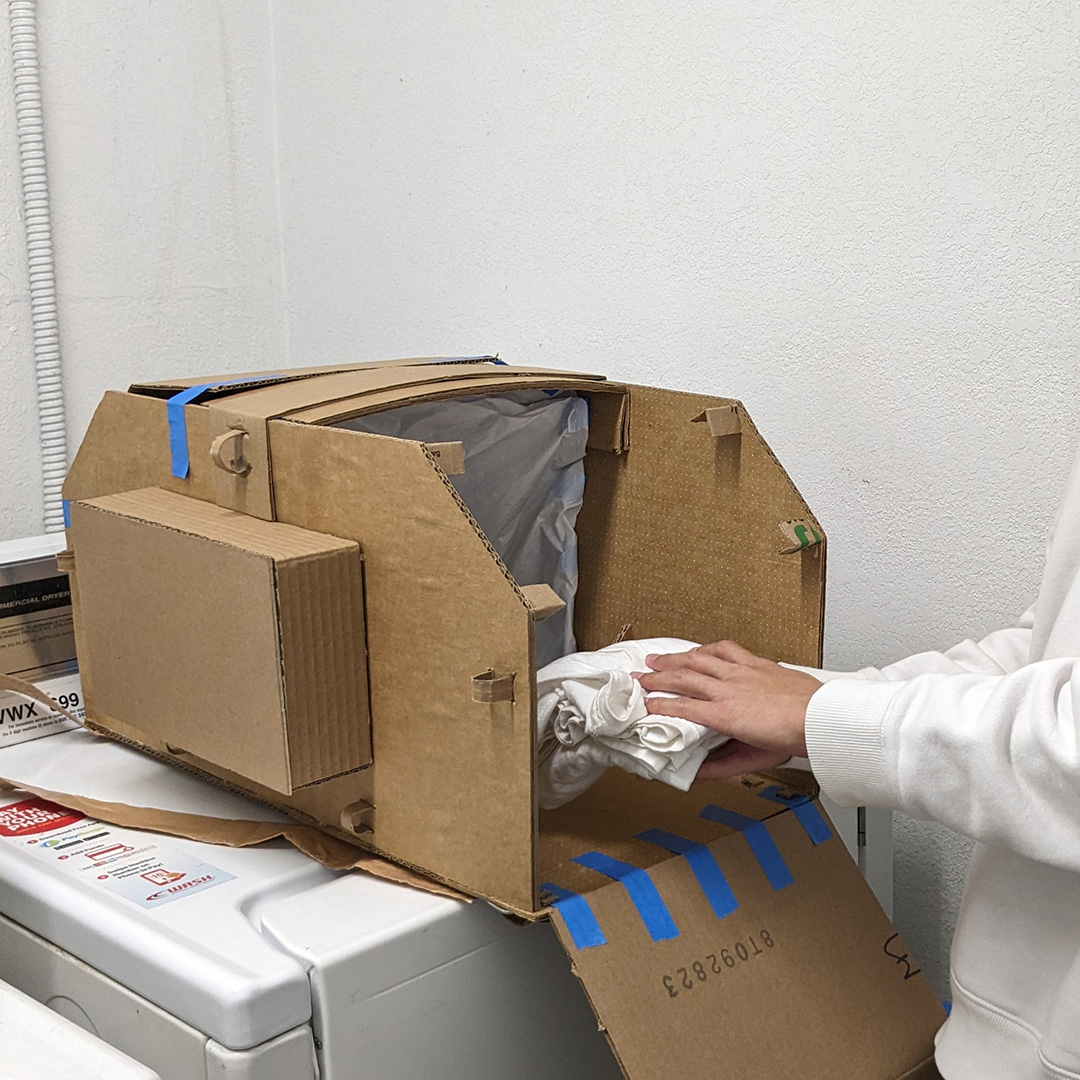
Packing Up
Once the clothes are clean, dried and folded, the user can then load them back into the backpack to bring home. Because of the Laundropack’s structured design, the clothes are less likely to get wrinkled during transit.
Key Takeaways
- The Laundropack solves the problems found in the existing laundry carriers.
- Through its different configurations, it can serve both as the easy-filling hamper and the easy-carry backpack, with minimal effort in
the transition between the two. - The dual compartment design negates the sorting time, as previously required when using existing products.
CAD Modeling
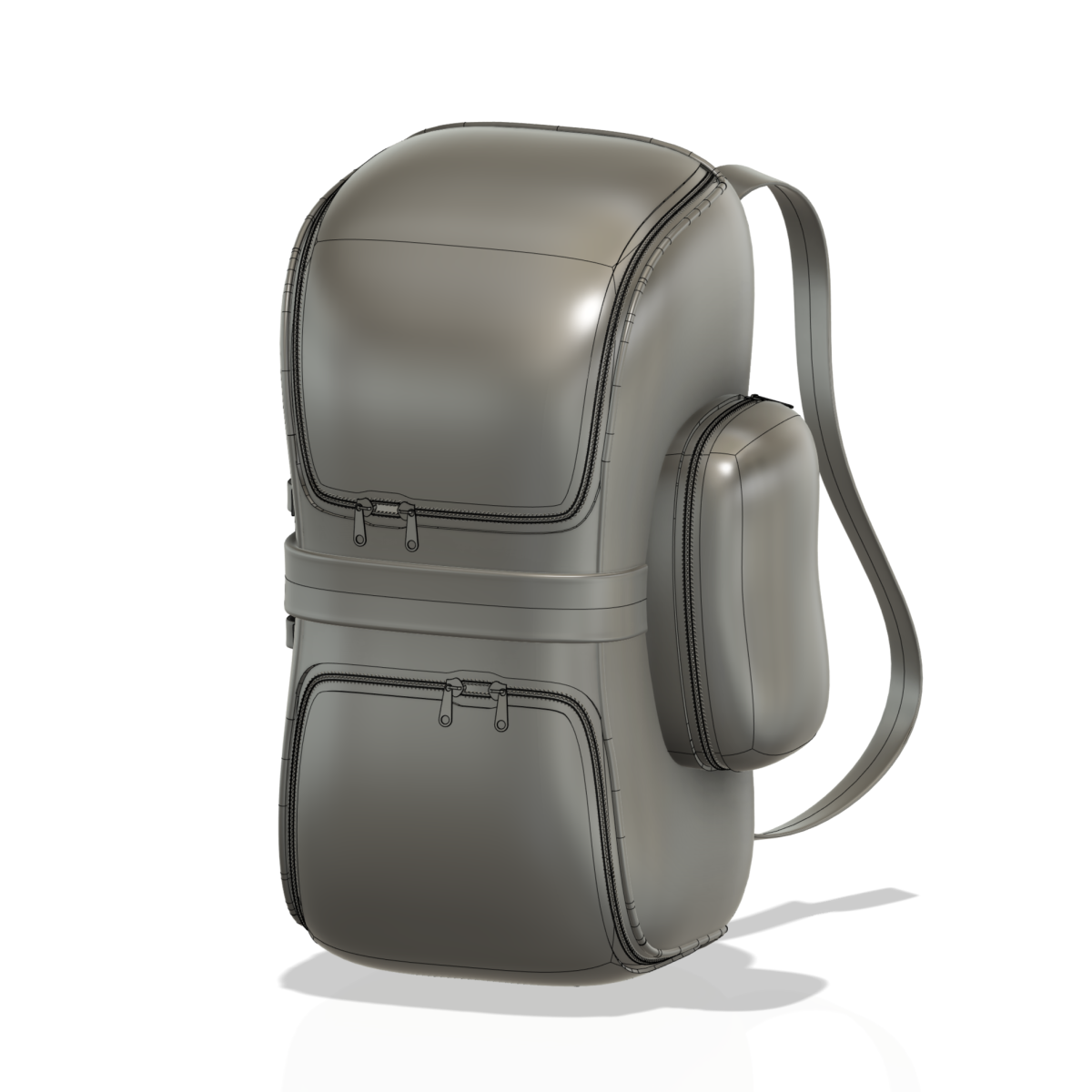
Now that I had pretty much settled on the design of the Laundropack, the next step was to CAD model it to create some realistic renderings. I created this entire model in Fusion 360, which pushed my skills in building soft, organic shapes and forms. This model is primarily using Fusion’s Form tool, paired with lots of surfacing and projections.
Modeling the Zippers was one of the most challenging things I have ever done in a CAD program. The zipper modules were created in an external file, then pulled in to this design as an asset. I then used Pattern on Path to duplicate them along the edges of the bag. This was extremely finicky to do and it took hours to get them to pattern properly without landing me with a bunch of errors. I also modeled the zipper pulls and brought them in as assets as well.
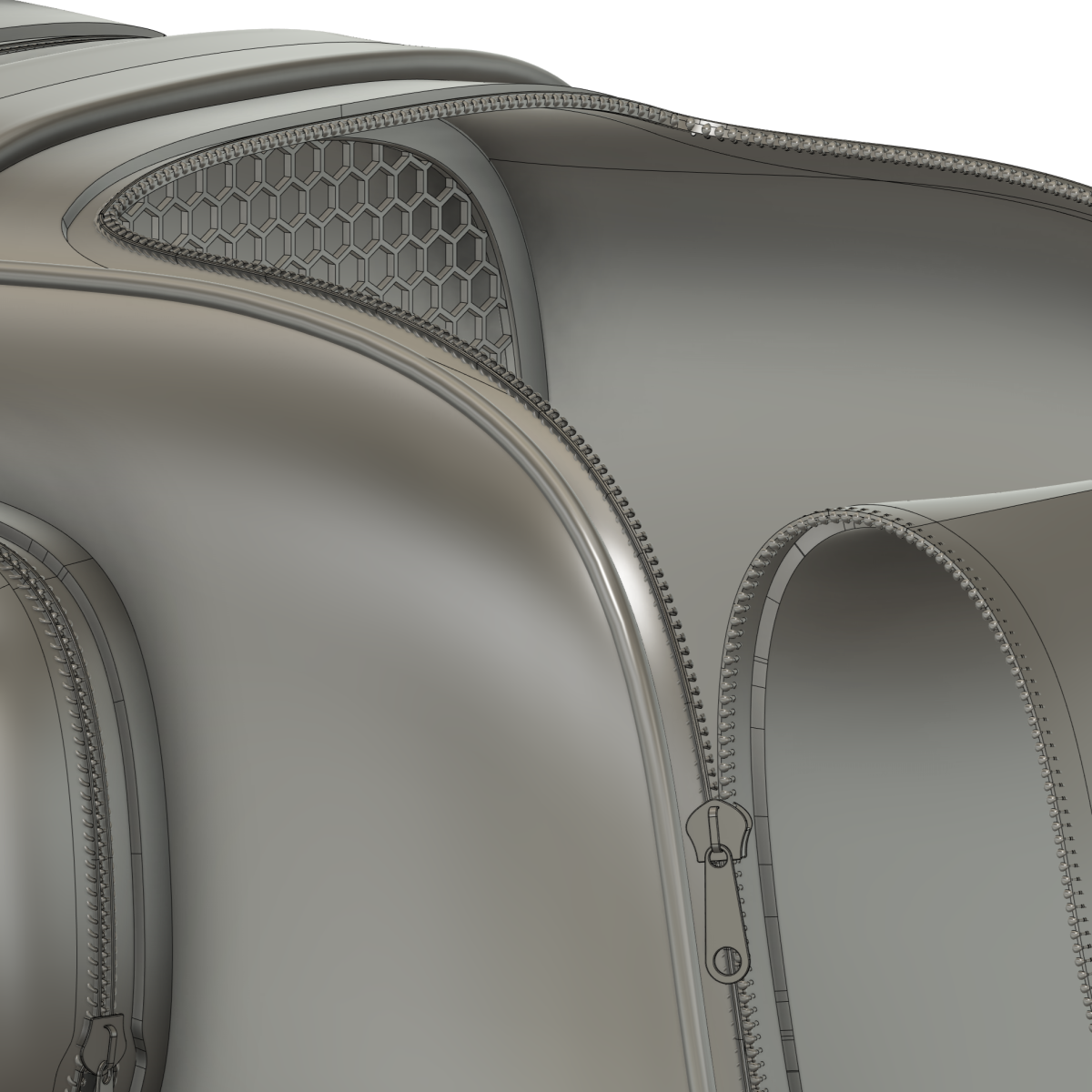
Rendering
The rendering process for the Laundropack was by for the most fun and interesting part. In my Industrial Design program up until this point, I have only ever had to render hard goods. Soft goods, on the other hand, are extremely difficult to get them to look correct, because of their natural creases and textures that typically are not ever modeled on a typical CAD program.
Because of this, rendering the Laundropack was a super unique and challenging process, and I am super proud of what I came up with.
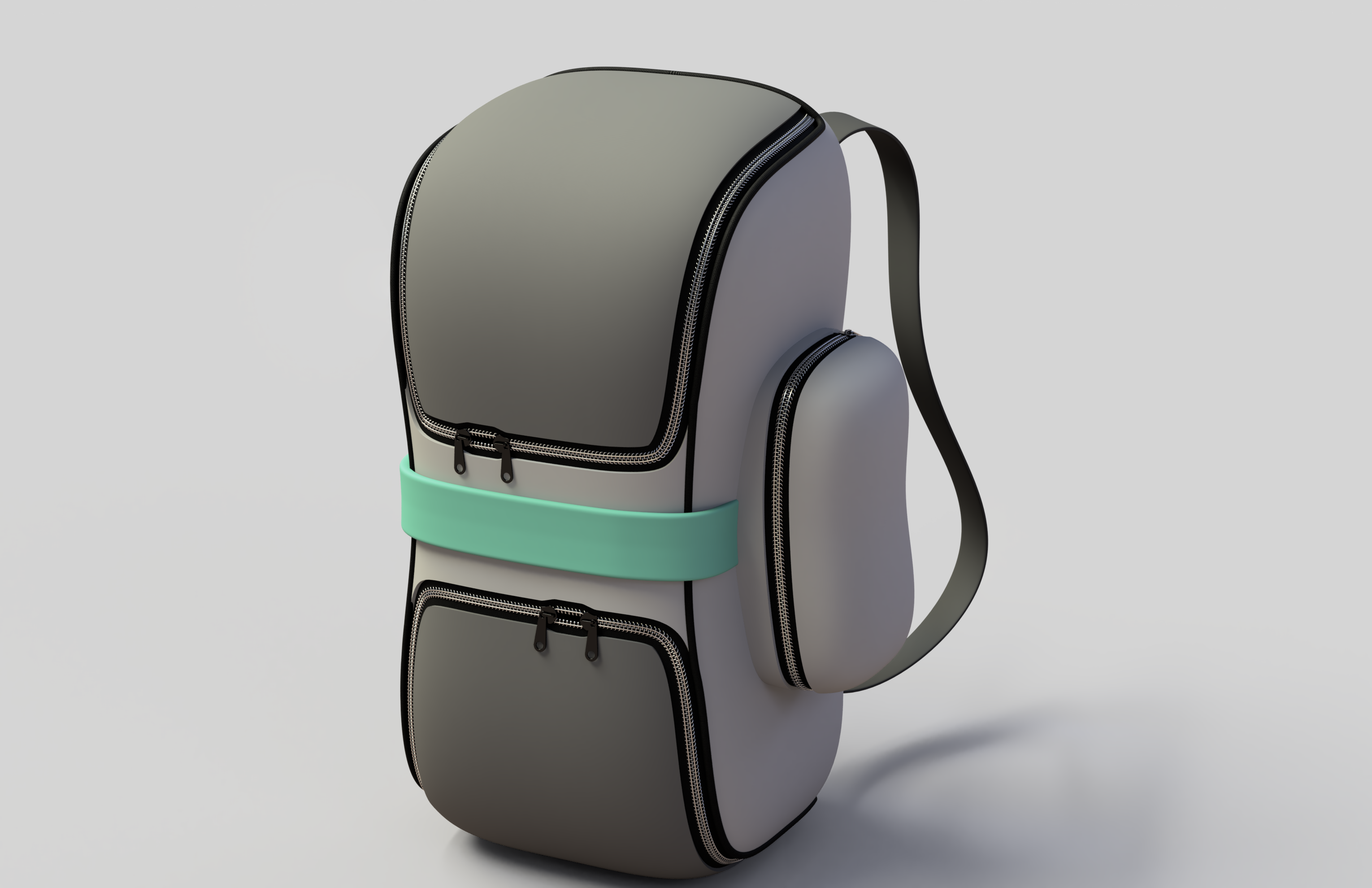
I initially started off by creating a simple rendering directly with Fusion 360’s built-in engine. I did not care about adding any textures or advanced materials yet. My primary goal with generating these images was simply to show off the form of the bag with contrasting lighting.
Vizcom
Next, I an online AI Image generation / rendering tool called Vizcom to process the original rendering from Fusion. Vizcom has the capabilities to take existing images or drawings to apply realistic materials to over what it sees, which was exactly what I needed, to add the realistic textures and creases of fabric.
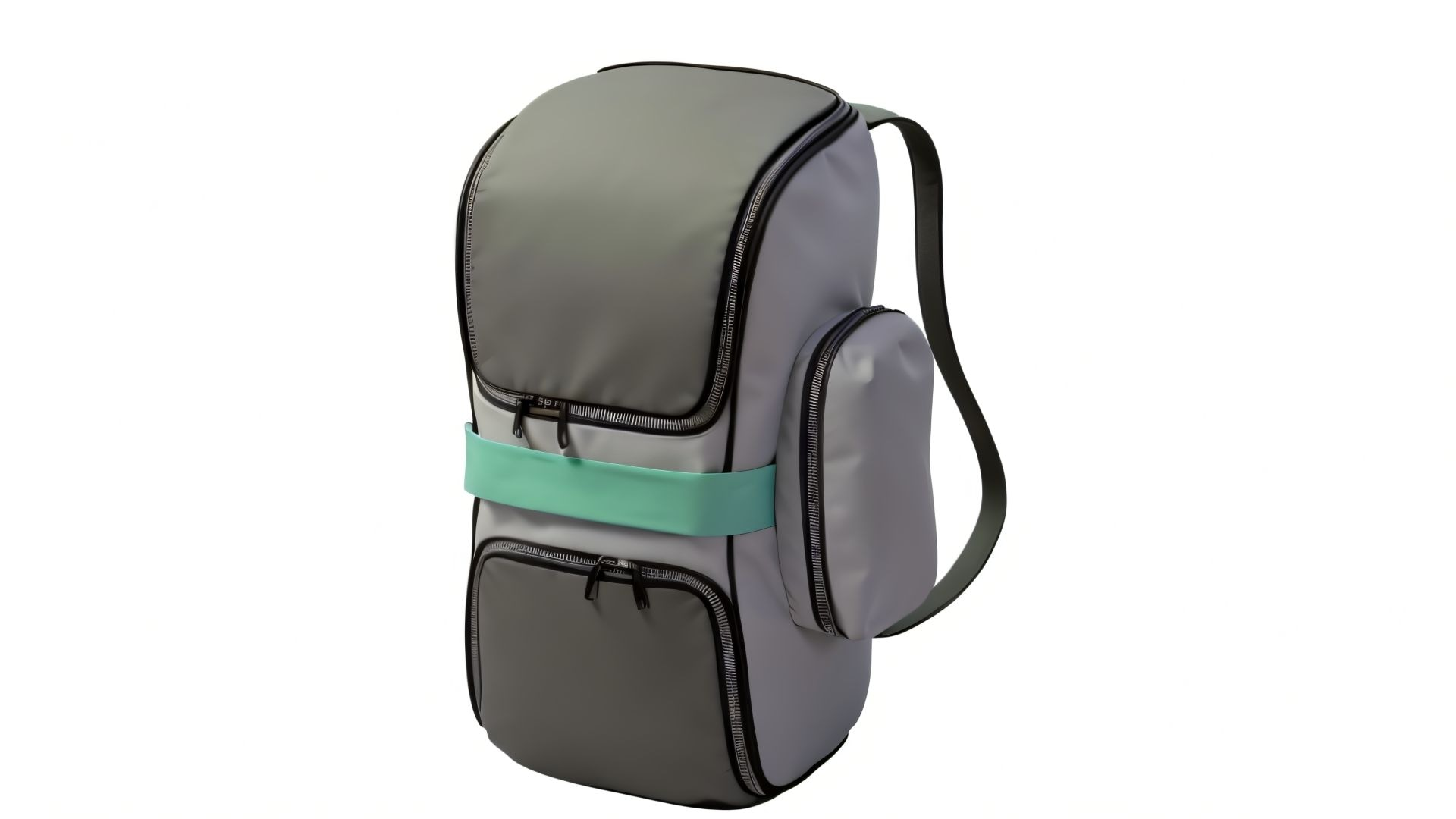
A few Vizcom generations later, and the bag looks pretty great. However, upon closer inspection, I started to find a ton of flaws. Most notably, how scrambled the zippers look. I then realized that Vizcom alone carries the downside that it doesn’t know how to handle small details.

The zippers look pretty bad.
End Result
That’s when I got the idea: what if I were able to use my perfect, dimensionally accurate zippers from Fusion, but with the fabric material from Vizcom? I then realized that I could use Photoshop to extract just the zippers from the Fusion version, to place it over the Vizcom version, getting the best of both worlds.
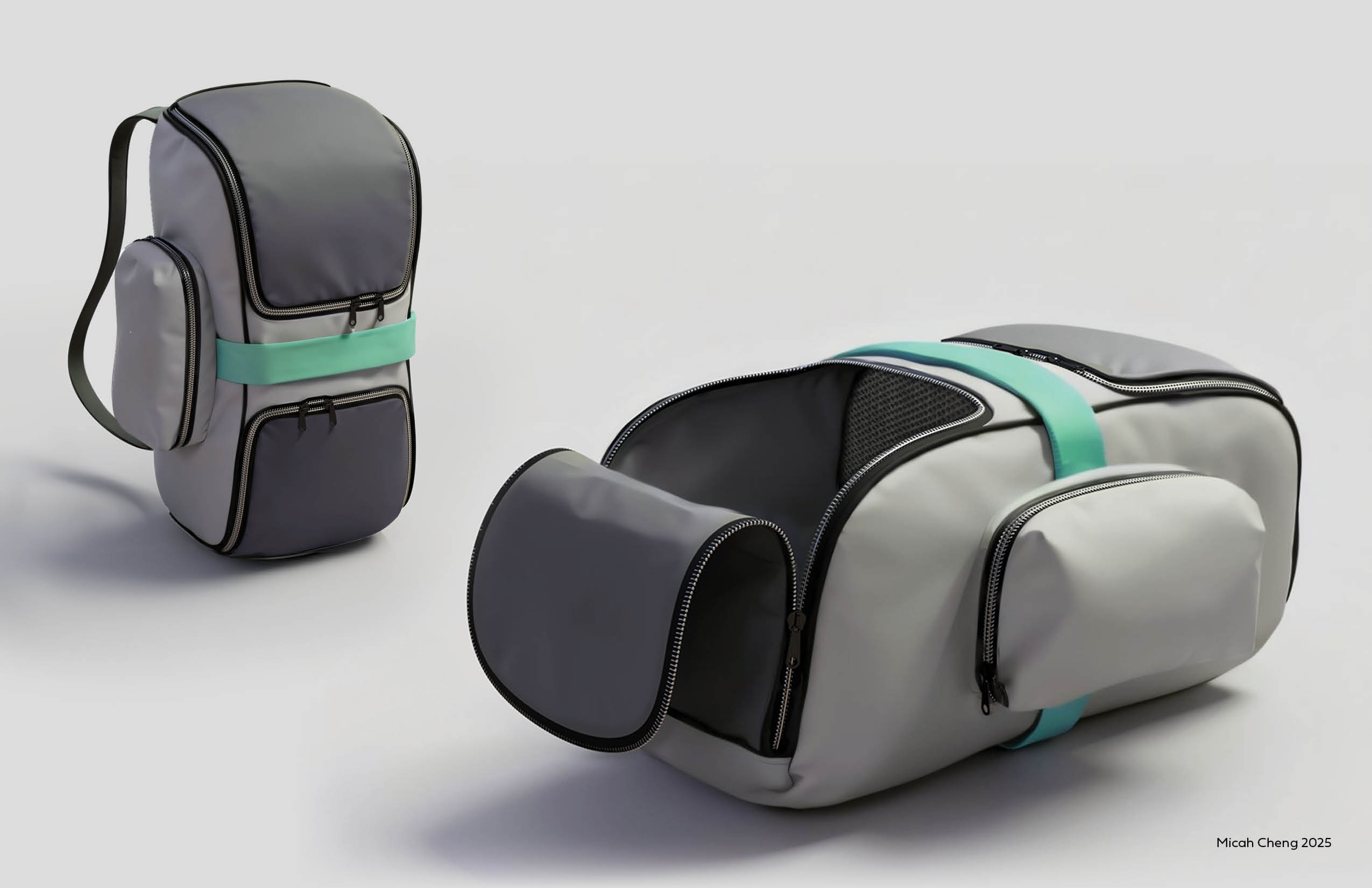
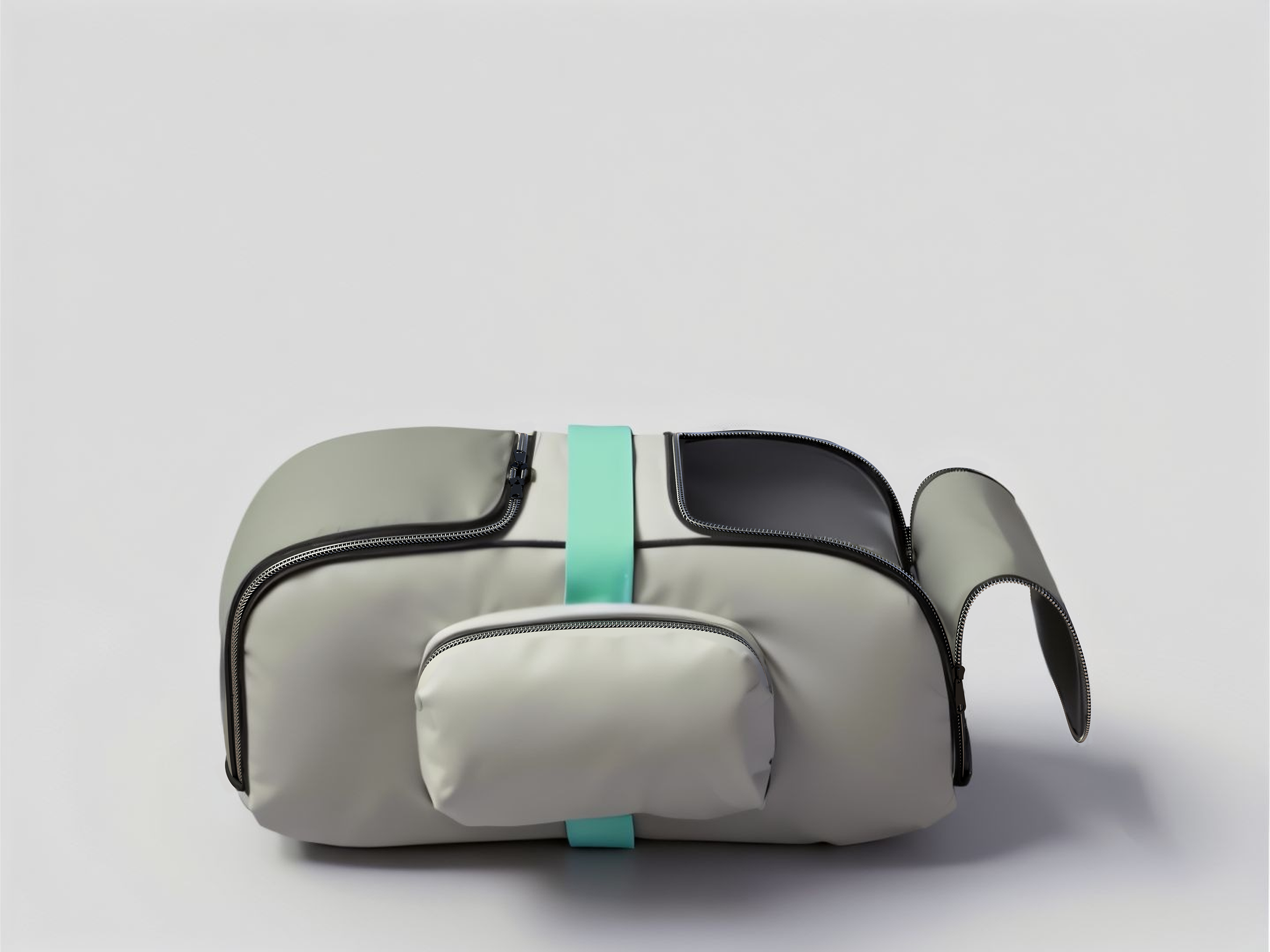
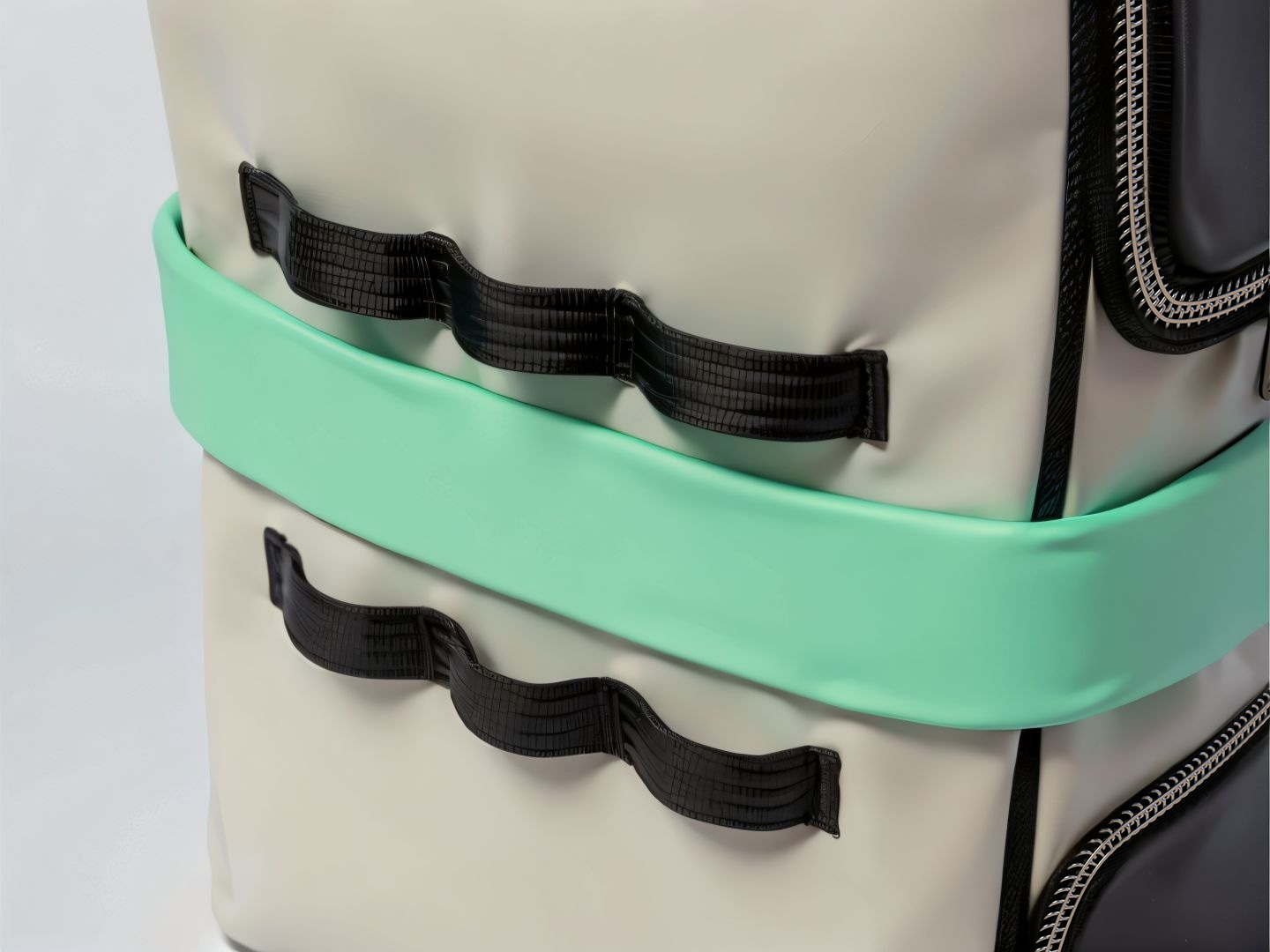
At this point, I had considered this project finished. I had gone through extensive research and concept development to come up with the ideas I settled with. I then executed those ideas to a level far beyond where I thought was possible for me using a mixture of CAD, AI and Photoshop. This project really pushed my limits as a designer, and I was really happy with my end result.
Revisiting the Laundropack
Fast forward several months, and despite me thinking I was finished with this project, I found myself in a position where I needed to work on it some more. There were two reasons for this: The first being that, in my Advanced CAD and Rendering class, we needed to digitally create a soft good or a bag as one of our required projects. The second that, in a different class I was taking at the same time, we had the opportunity to participate in the CSULB Apostle Business Ideation Challenge, where students get the opportunity to pitch their ideas to a panel of judges with the chance of receiving a cash prize.
Up until this point, I still was not 100% satisfied with the level I got the Laundropack CAD model to. The primary reason for this being, that back then, I did not have the time to build proper looking straps, or any fine details; with the previous revision, the renders only look good from a zoomed out perspective. Notice how there are no renderings of the rear, because I did not take any time to add details back there.
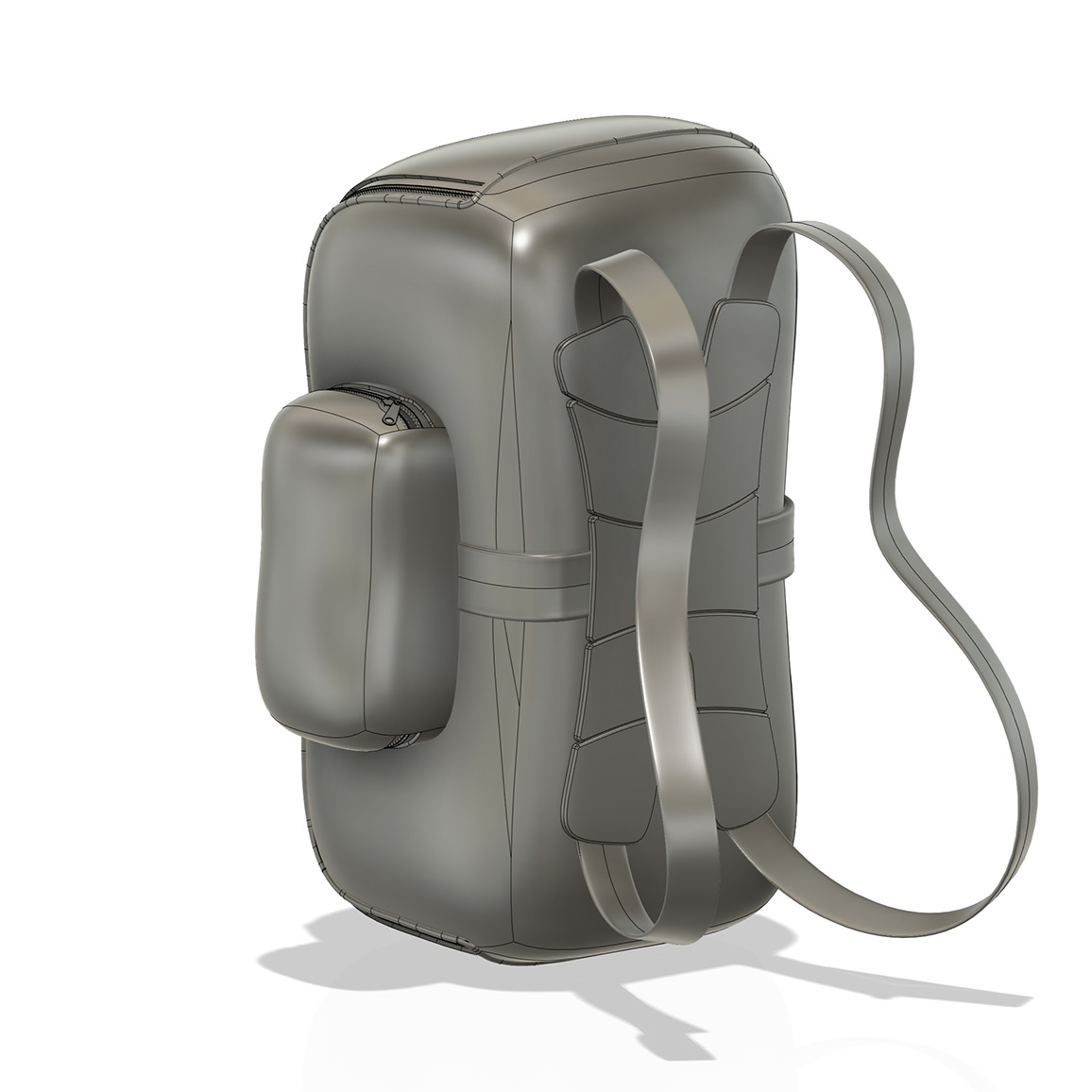
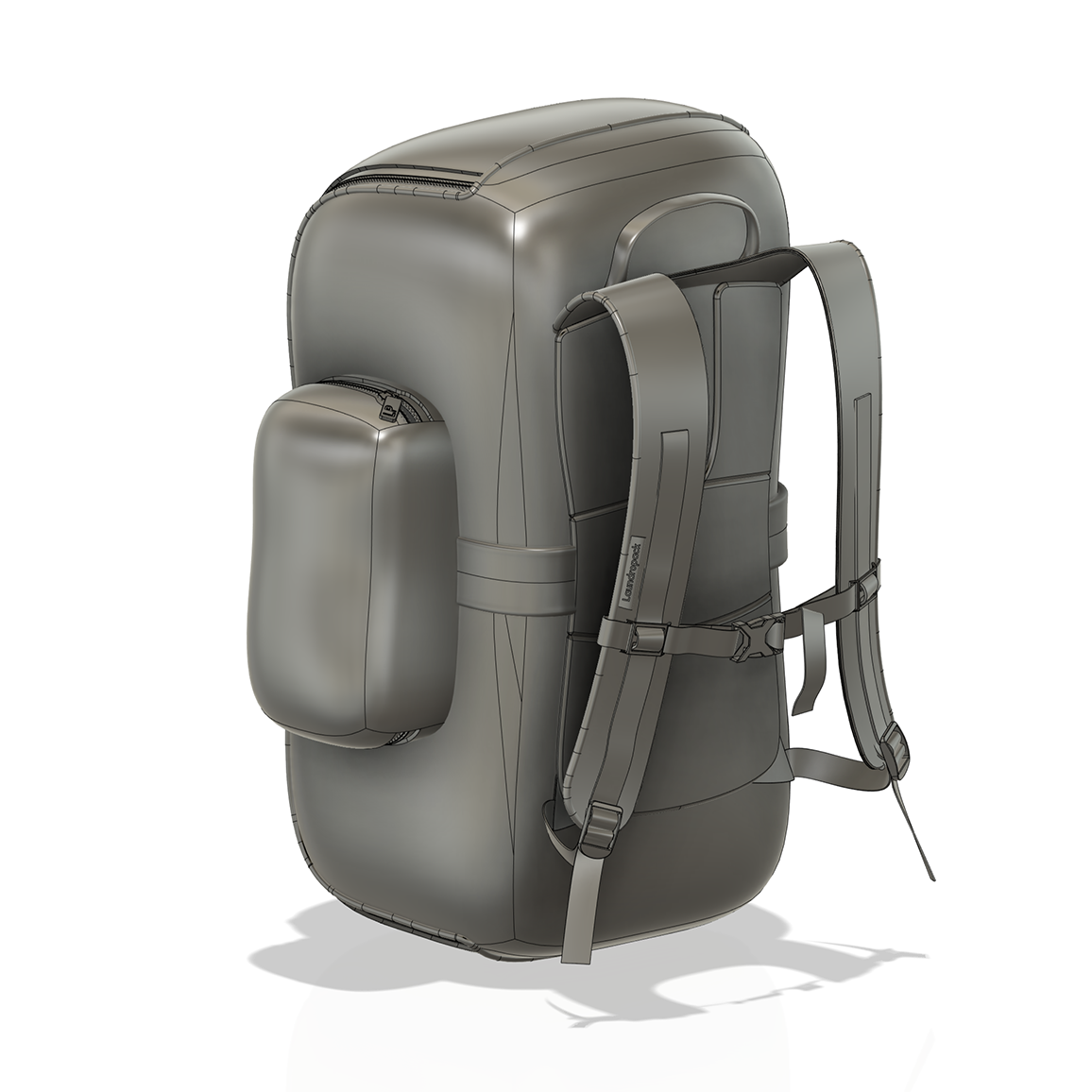
The low effort backing, from my previous revision.
The updated backing. Notice the highly-detailed straps.
After a chat with my professor, he was willing to let me use the old version of the Laundropack as a base, then continue improving it in order to fulfil his project requirements. Using a combination of surfacing, 3D splines, and many more hours spent, I managed to successfully redesign the rear of the bag. Taking some inspiration from my personal backpack, it now features wide, comfortable-looking straps rather than the simple flat ones found in the previous model.
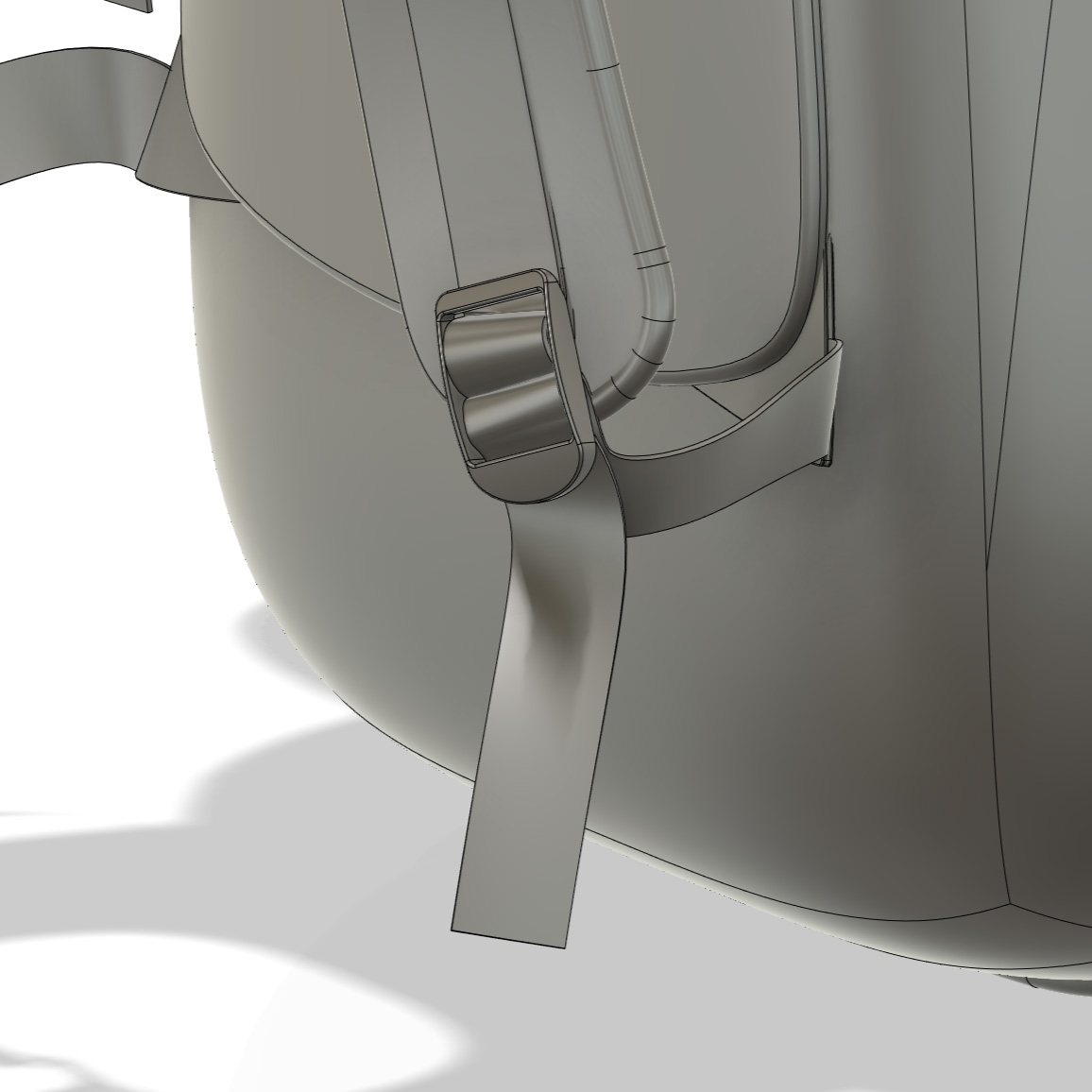
The straps are primarily created out of 3D splines + swept surfaces, then stitched together to create a solid body.
I added many small details that add to the realism of the model, such as this Laundropack tag.
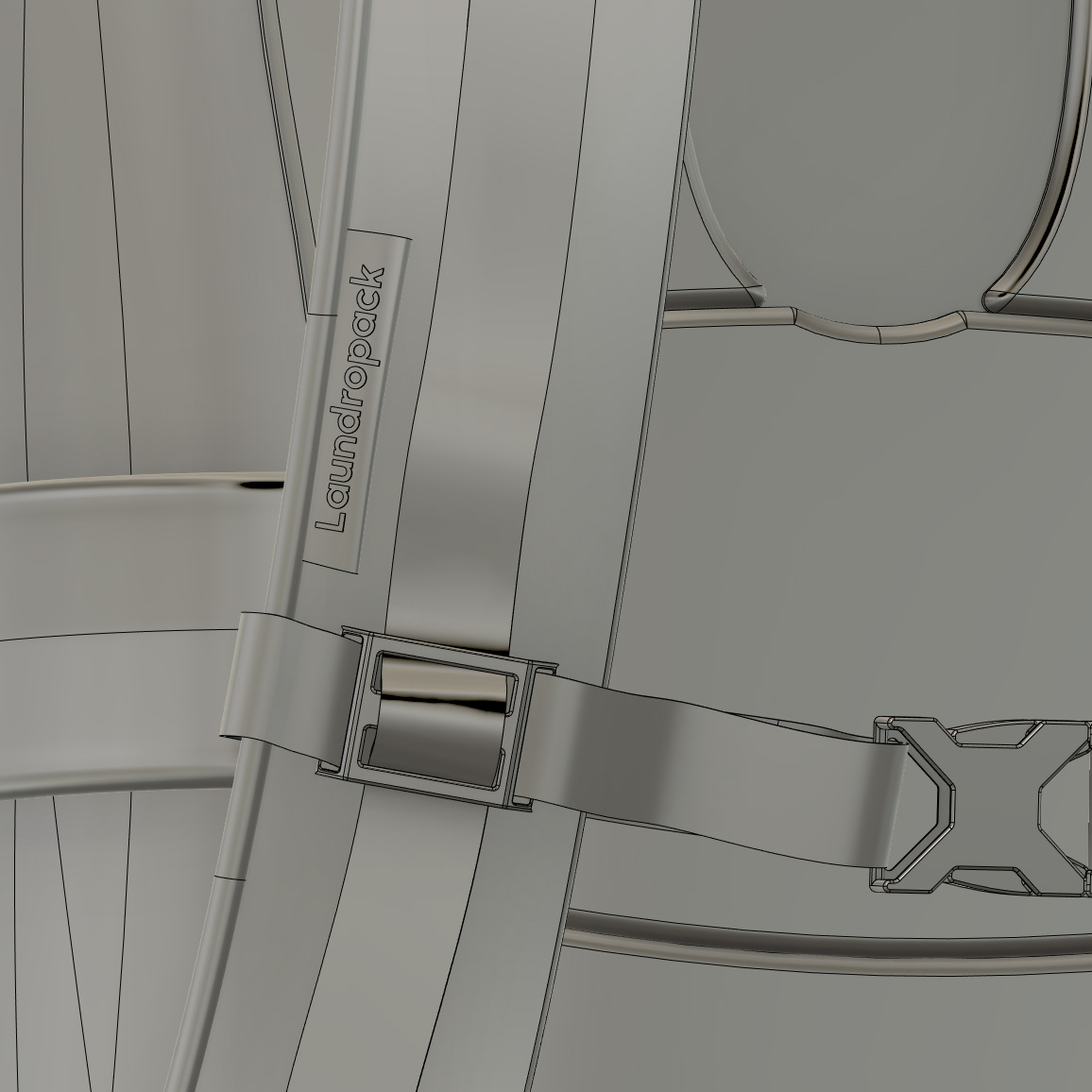
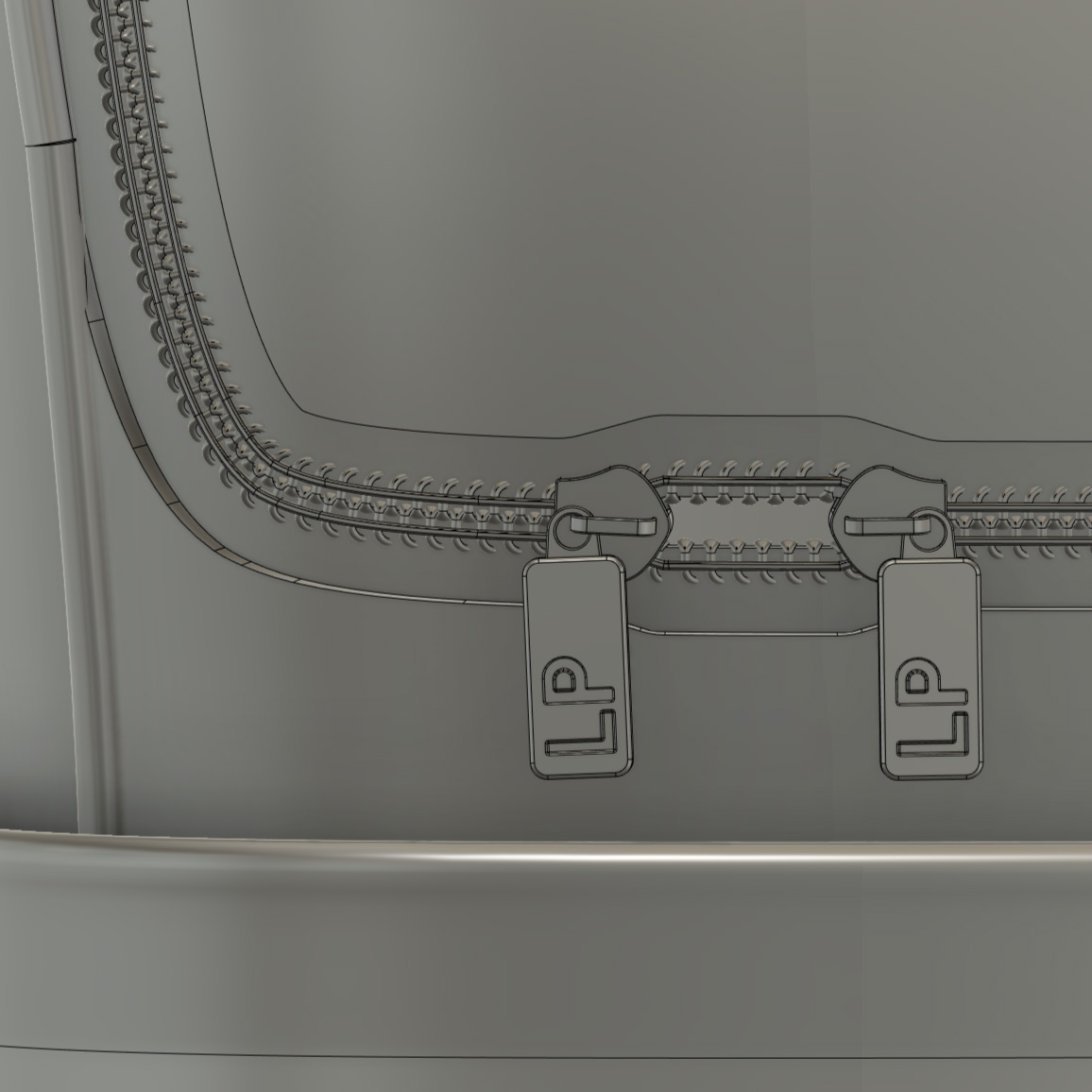
I also added some branding to the zipper pulls.
The handle was made with the Form tool. I started with a T-Spline surface, then bent it to the shape I wanted, then thickened it to create a body.
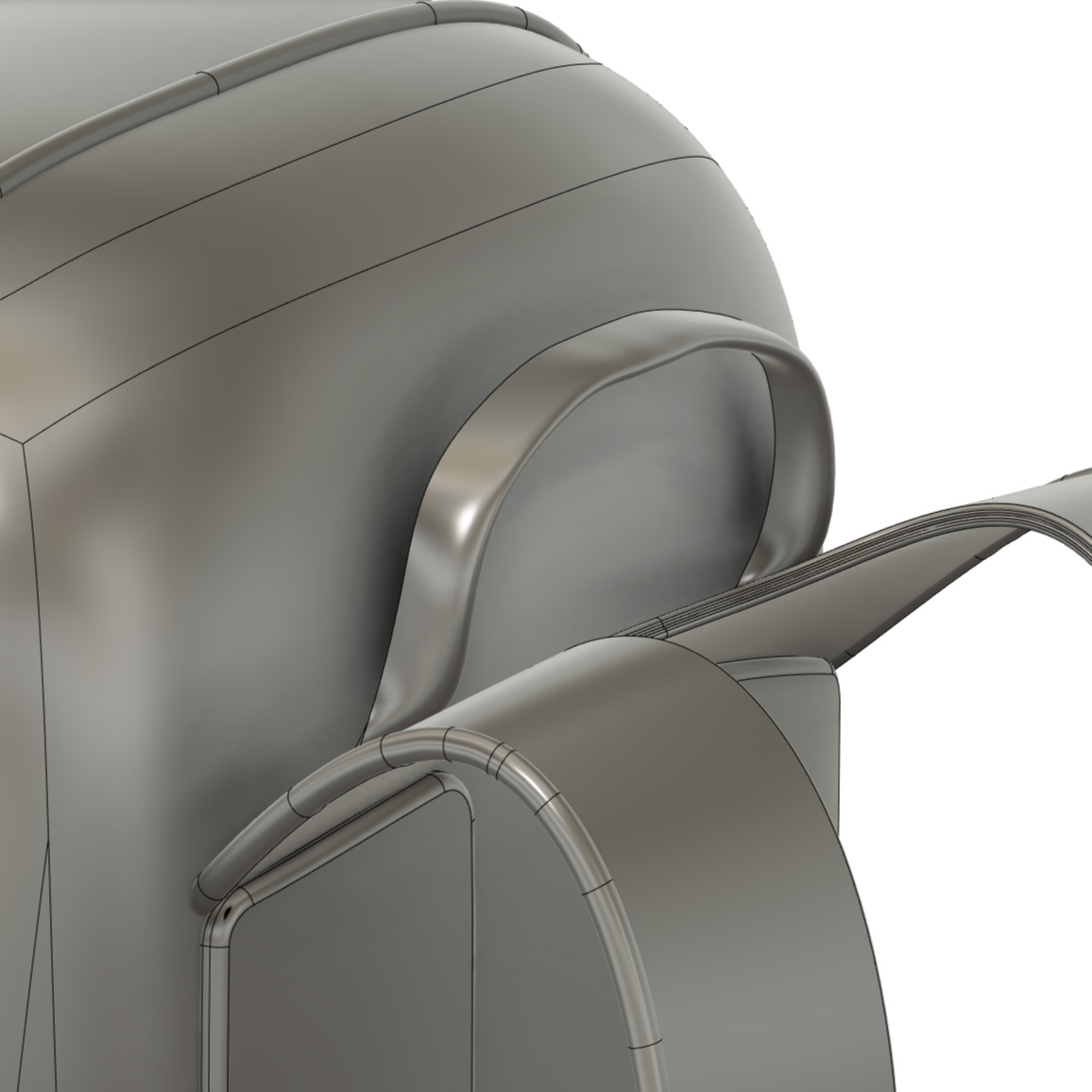
With all these details now added to the Laundropack, I went through the same process as before to create the realistic renderings. First rendering them in Fusion, then Vizcom, the Photoshop to stitch it all together. With this version, I decided to change the color to a warmer beige rather than cool grey, as I think it fit the utilitarian feel a laundry bag should have.
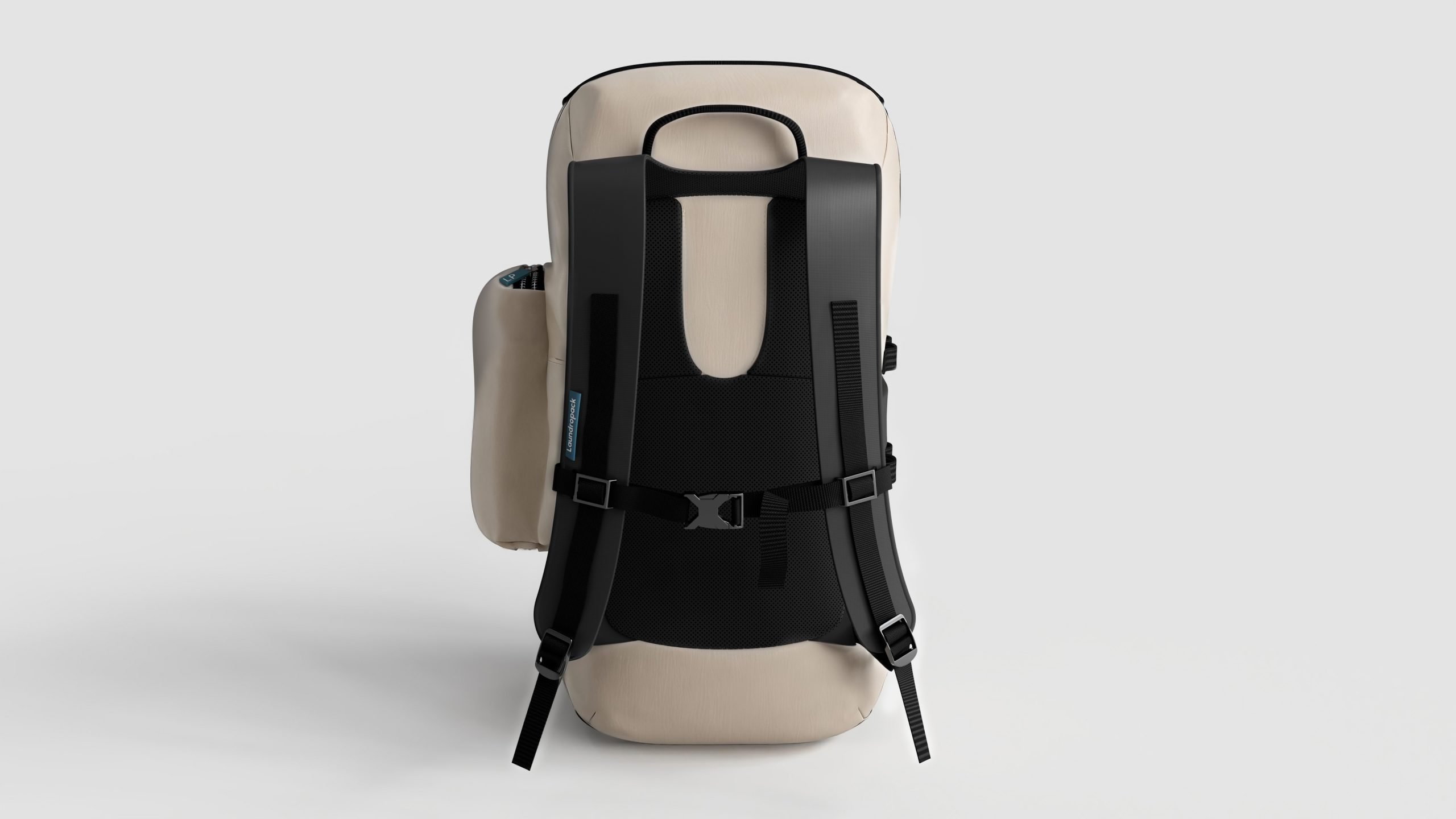
CSULB ABIC Challenge
The other factor why I wanted to refine this project was for the Apostle Business Ideation Challenge at California State University, Long Beach. In this challenge, students given the chance to do a quick, three minute pitch for a business or product proposal. For the purpose of this challenge, I also reworked the features and details page using the brand new renders, and fresh graphics.
I mainly saw this challenge as an opportunity to practice my presentation skills. It was a lot of fun getting up on the stage in front of an audience to pitch my concept, and I ended up winning a nice cash prize as well!
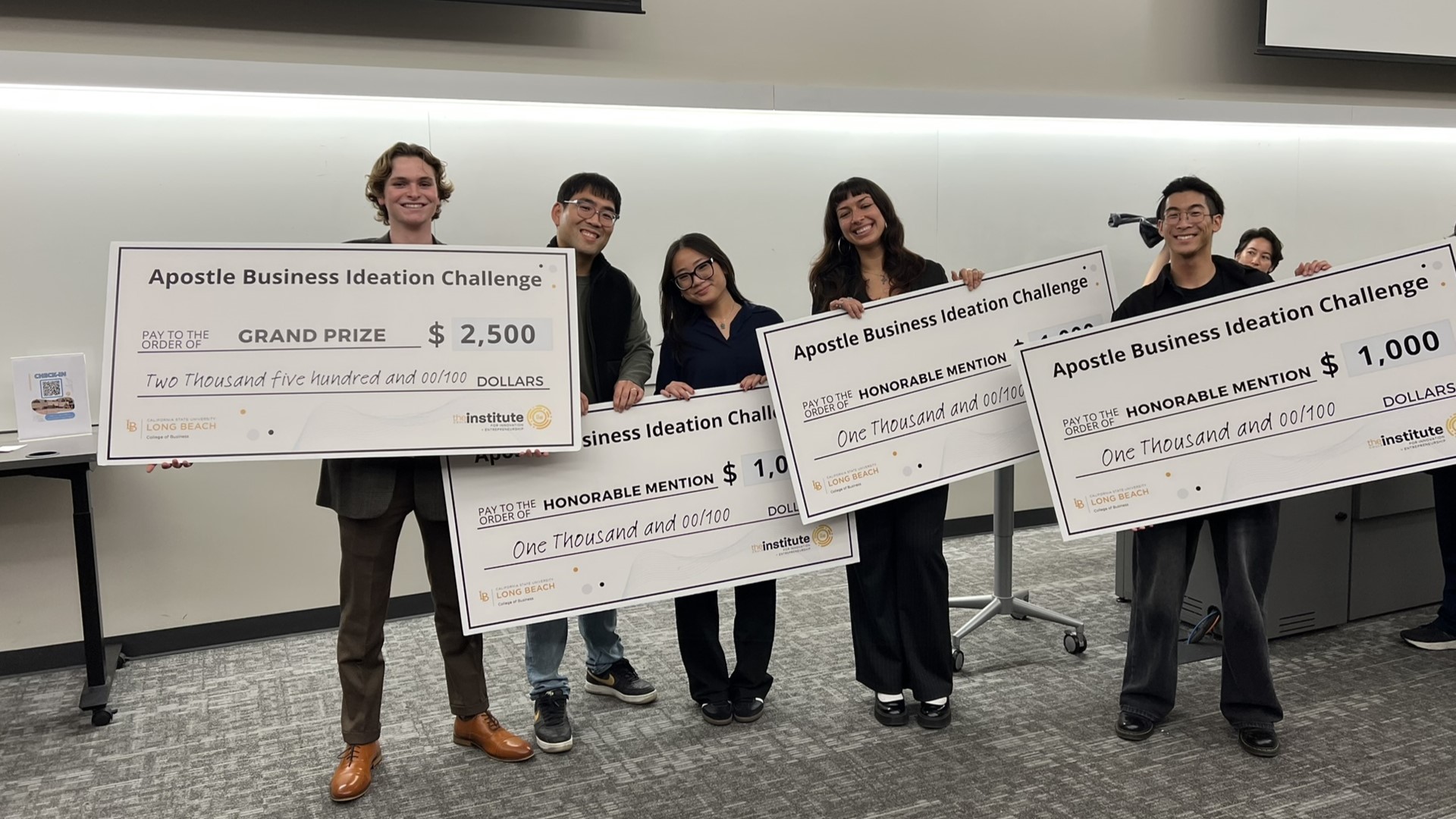
Final Product Poster & Renderings
